Samsung QN85D is the entry-level model in the Neo QLED series for 2024, but it certainly doesn’t come across as a "budget" option. It’s a television that combines modern technology with convenient smart features. During tests, the Tizen system operated smoothly, and integration with the SmartThings ecosystem made it easy to connect other devices in the home. If we use Apple devices, AirPlay works flawlessly, which is convenient, especially for viewing photos or videos from our phone. As for its performance during daily use, it simply works very well. The television handles viewing even in bright rooms – its brightness is sufficient that there’s no need to cover the windows. Additionally, the stable central stand not only looks good but also adds confidence that the device is standing securely and will definitely fit on smaller furniture. There is a lack of recording function, but the solar remote control, which operates decoders (e.g. Canal+) and the PiP function are practical additions that anyone who enjoys spending time watching regular television will appreciate. As for the picture – because that’s the most important thing in a TV – the QN85D makes a great impression. The VA panel provides very good blacks – especially if we watch the television head-on. Thanks to miniLED backlighting, the television better controls the light, resulting in much more detail visible in dark scenes. When it comes to motion fluidity, the television performs excellently thanks to the 120 Hz refresh rate – both games and matches are enjoyable to watch. If we’re gaming, low input lag combined with an excellent motion smoother and game bar will be a significant advantage – gameplay will be a pleasure. Samsung QN85D is a versatile television that will perform well for both everyday television watching and more demanding sessions or gaming on a console. Although it lacks some features, such as recording, its picture quality, motion fluidity, and smart capabilities definitely make up for these shortcomings. If we’re looking for a modern yet affordable Mini LED model, QN85D will be a very good choice.
- Matching (Score)
- Our verdict
- TV appearance
- Where to buy
- Contrast and black detail
- HDR effect quality
- Factory color reproduction
- Color reproduction after calibration
- Smoothness of tonal transitions
- Image scaling and smoothness of tonal transitions
- Blur and motion smoothness
- Console compatibility and gaming features
- Input lag
- Compatibility with PC
- Viewing angles
- TV efficiency during daytime
- Details about the matrix
- TV features
- Apps
- Playing files from USB
- Sound
Samsung Neo QLED QN85D / QNX1D vs LG QNED93A / QNED90A
Direct compare
Neo QLED / QN85D / QNX1D
QNED93A / QNED90A

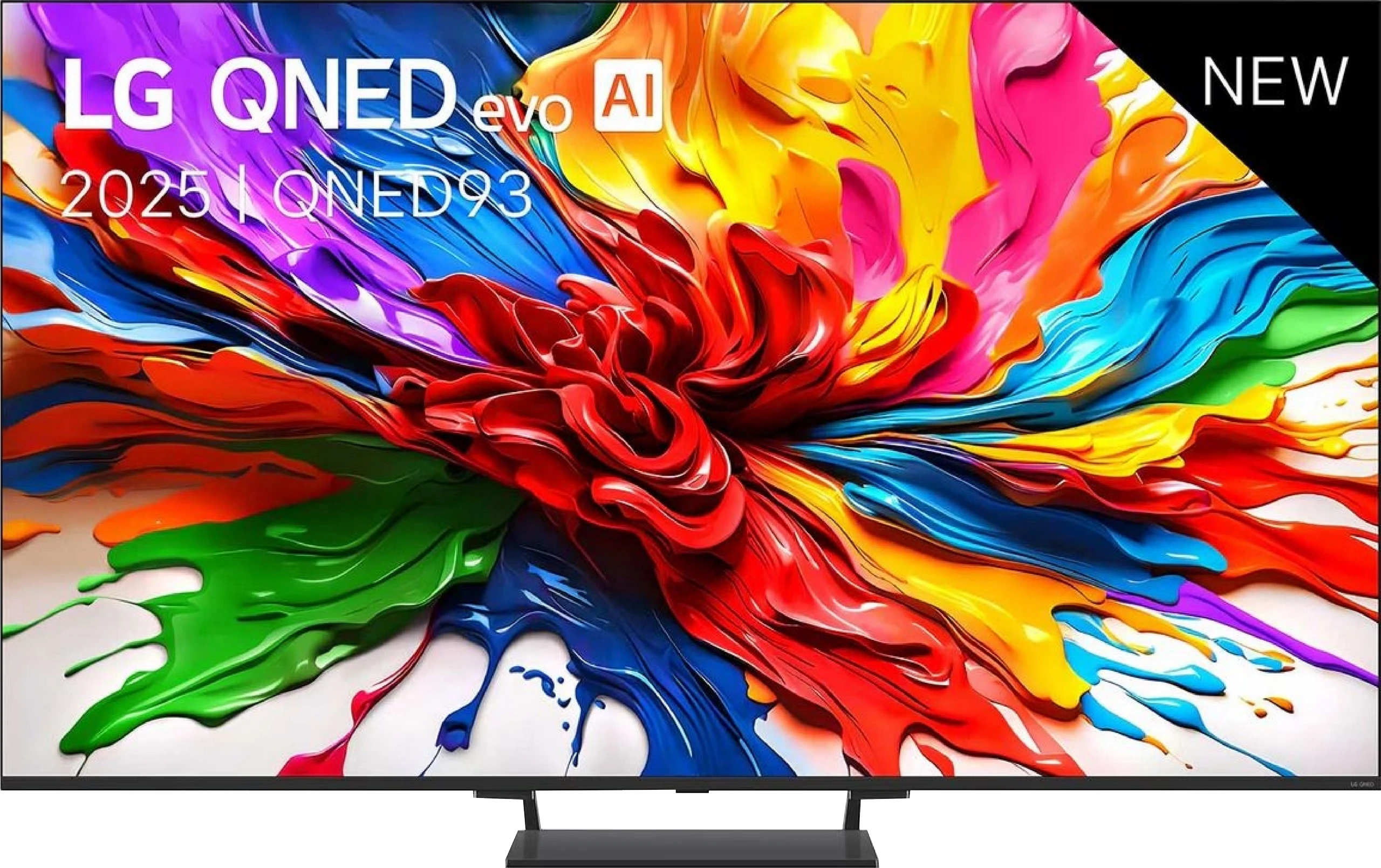
Panel type: LCD VA
Resolution: 3840x2160
System: Tizen
Model year: 2024
Complete the survey to find out the result

Panel type: LCD VA
Resolution: 3840x2160
System: WebOS
Model year: 2025
Complete the survey to find out the result

Overall rating
7.4
7.3
Movies and series in UHD quality
6.7
6.8
Classic TV, YouTube
6.8
6.9
Sports broadcasts (TV and apps)
6.7
6.9
Gaming on console
8.9
8.6
TV as a computer monitor
7.6
8.6
Watching in bright light
7.3
6.2
Utility functions
7.4
8.2
Apps
8.7
9.1
Sound quality
7.0
6.9
Complete the survey to find out what fits your preferences
Advantages
Nice contrast - Miniled backlighting
Very good for gamers - 120Hz, 4xHDMI 2.1, low input lag
Tizen operating system with SmartThings and AirPlay support – wide integration and flexibility
Very high brightness 825 cd/m² – good performance in bright rooms
Pleasant sound with noticeable bass
Pretty good contrast
High number of dimming zones
Good HDR brightness (around 1400 nits)
Wide colour gamut coverage (around 96% DCI-P3)
144 Hz mode and a full set of features for gamers (HDMI 2.1, VRR, ALLM, G-Sync, FreeSync, HGiG, Game Bar)
Low input lag (7 ms at 120 Hz)
Good compatibility with PC, including 144 Hz and clear fonts
WebOS with a rich selection of apps and voice control
Magic remote
Quite effective upscaling and image processing tools - works great for older content like free-to-air TV or YouTube
Disadvantages
No recording feature
Limited support for multimedia formats, no DTS audio format
Local dimming algorithms need refinement
Very average viewing angles
Dolby Vision does not bring a noticeable improvement over HDR10
Our verdict
LG QNED93A is a television that at first glance appears to be a solid step forward compared to previous LCD models from this brand. On paper, we get a lot: significantly more dimming zones, 144 Hz refresh rate for gamers, support for all HDR formats, including Dolby Vision, and WebOS with a new Magic remote, which remains one of the most user-friendly control systems. The QNED93A shines most brightly in gaming applications. Four fully-fledged HDMI 2.1 ports allow you to connect consoles and computers without any limitations, and the low input lag is maintained at both 120 and 60 Hz. For PC gamers, an additional advantage will be the 144 Hz mode and full compatibility with G-Sync and FreeSync. So it can confidently be said that in terms of features for gamers, the QNED93A doesn't have any complexes compared to the competition. Another strong point is WebOS. LG's system has been regarded for years as one of the most user-friendly in everyday use, and this is confirmed here. Everything is clear, and the Magic remote allows you to operate the TV like a mouse pointer – quickly and intuitively. Brightness is also a plus. At its peak, it managed to achieve results close to 1400 nits. This is enough for the image to not wash out in brighter rooms and for special effects in movies or games to look convincing. The image processor handles upscaling older content well – television or films in lower resolutions appear clearer and sharper than on many competing screens.
However, it cannot be hidden that the biggest problem with the QNED93A is the local dimming algorithms. In scenes full of blacks, the screen can darken significantly, causing many details to simply vanish. The effect is such that the contrast looks better at first glance, but at the cost of information that should be visible. An additional problem is the Dolby Vision mode, which usually improves certain aspects of screens, but in this case changes very little. The differences between dynamic and static metadata have to be literally searched for with a magnifying glass. This is simply disappointing because the hardware's number of dimming zones and stronger backlighting provide the basis for a better effect. So who is the LG QNED93A for? It is a television that will work excellently as a home entertainment centre, especially if you’re thinking about gaming on consoles or PCs. In everyday watching of TV and films in well-lit conditions, it will also provide a lot of satisfaction thanks to its high brightness and decent image processor. However, one must accept that in scenes with a lot of black and full utilization of HDR, this model does not measure up to its competitors. LG has shown that it can create a very solid LCD screen, but it is also evident that not everything has been refined as it has in their OLED televisions.
TV appearance





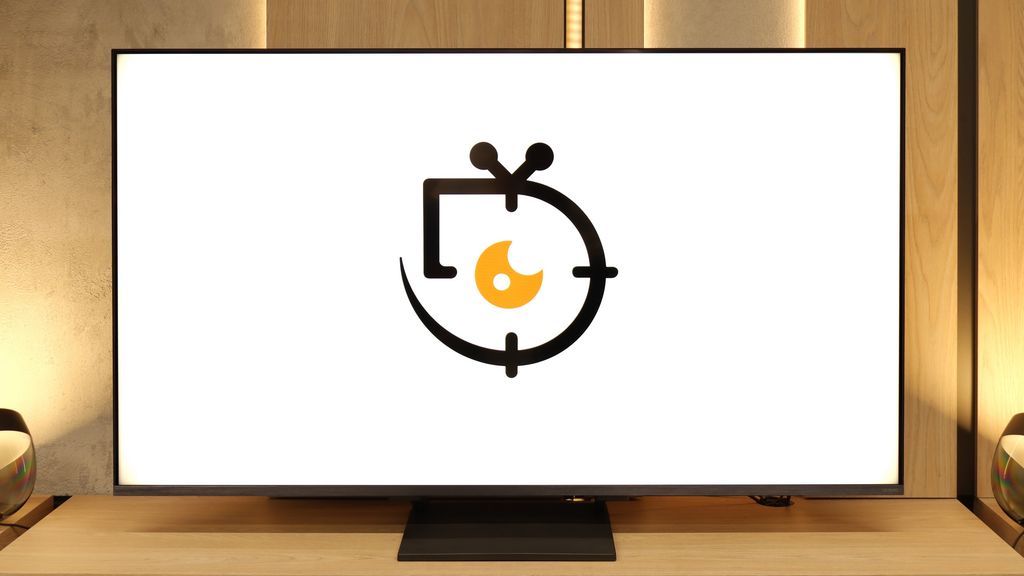
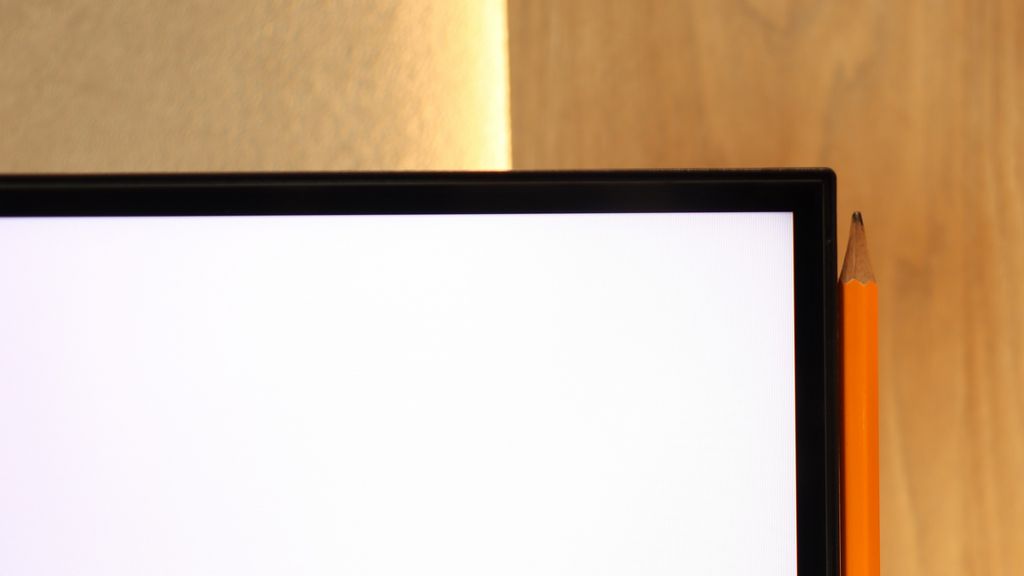
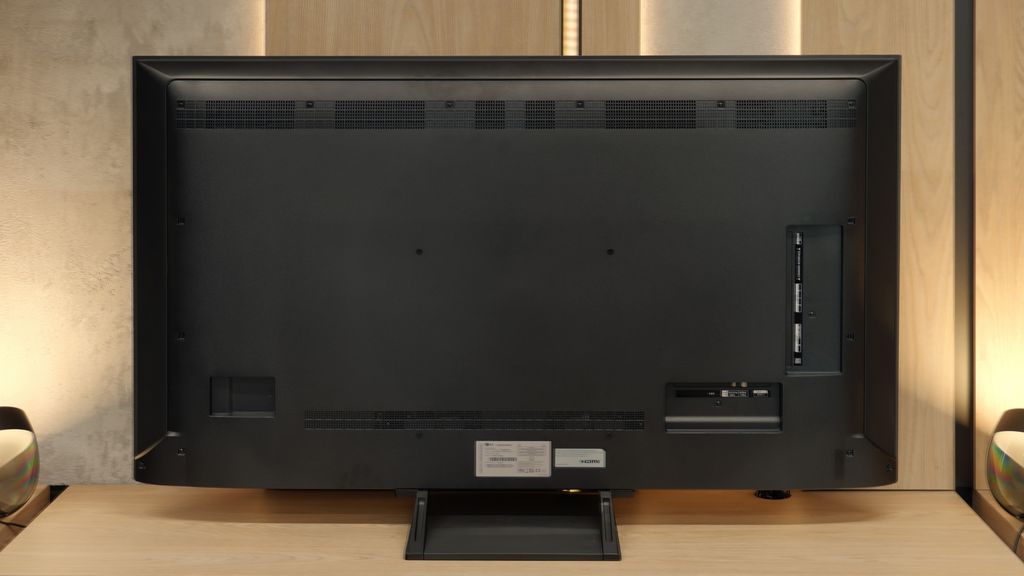
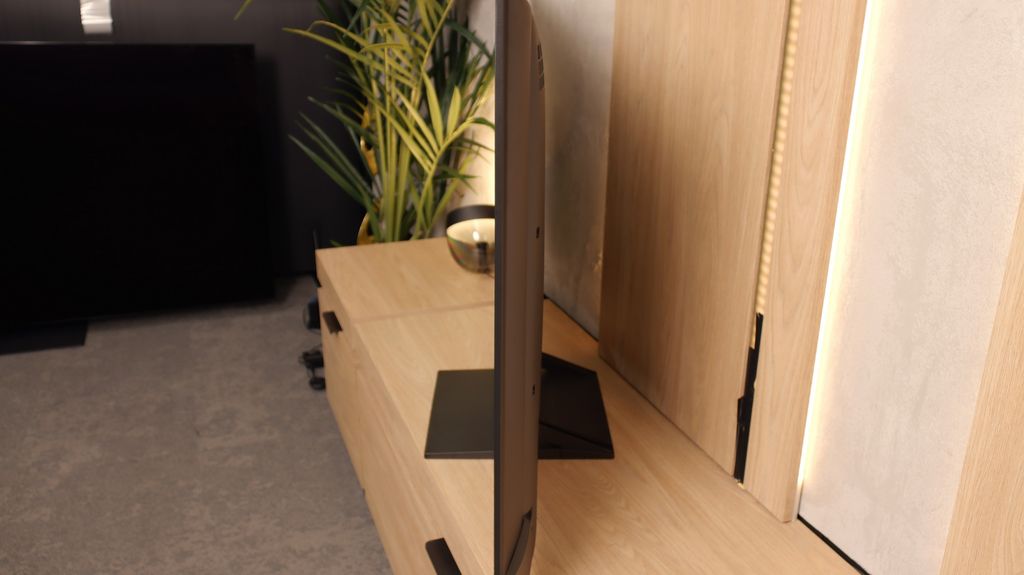
Contrast and black detail
7.6/10
7.3/10
Local dimming function: Yes, number of zones: 120 (12 x 10)
Local dimming function: Yes, number of zones: 308 (14 x 22)
Contrast:

Result
107,750:1

Result
27,100:1

Result
62,500:1

Result
8,750:1

Result
4,950:1

Result
130,500:1

Result
30,950:1

Result
15,250:1

Result
6,750:1

Result
4,600:1
Halo effect and black detail visibility:

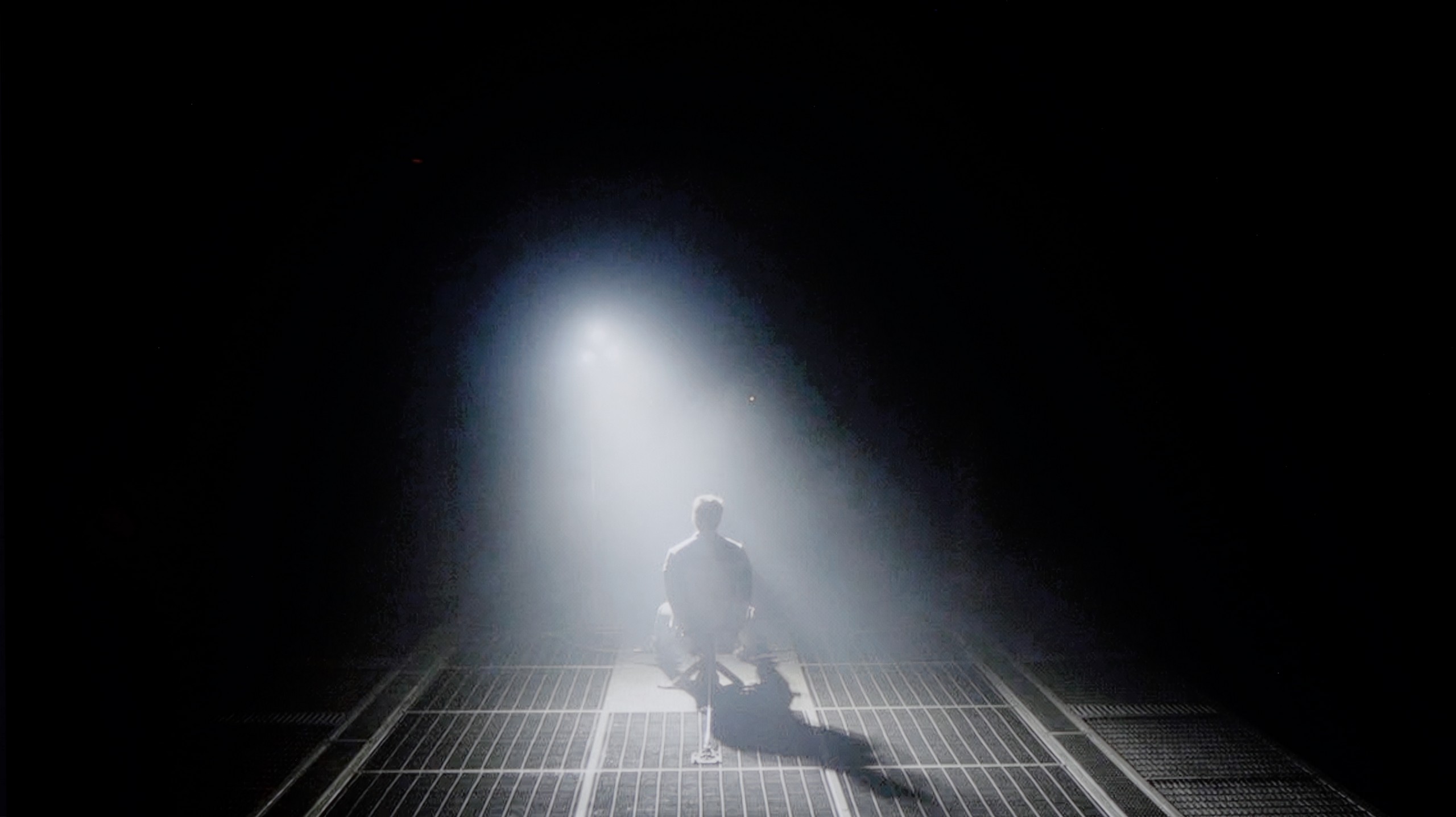
Samsung QN85D for 2024 is the first model from the NeoQLED series to use a VA panel, offering significantly better blacks than IPS/ADS technologies. The 55-inch version has 160 dimming zones, which may not be an impressive number compared to competing models from China. In larger sizes, the number of zones is greater, which naturally translates to better contrast. The contrast results are good, but certain limitations are evident.
With smaller elements on the screen, the limited number of zones causes issues – the TV either tries to maintain a high brightness level, resulting in a halo effect around objects, or it dims too much, as observed in the test scene from the Pioneer disc. Additionally, in the same scene where the TV showcased its highest capabilities (Oblivion) in contrast, it also has significant problems with light separation. You can see how the TV struggles to maintain the best black at the cost of detail in the whites. You can't have it all. Both of these effects impact the perception of contrast, making the performance weaker in more challenging conditions. However, compared to TVs without local dimming technology, the results are very positive and can be surprising.
We took a close look at the 55-inch version of the LG QNED93A, featuring a high-contrast VA panel. However, for Mini-LED TVs, it’s not just the panel itself but primarily the number and performance of the local dimming zones that determine the final effect. In this model, we counted an impressive 308 zones right off the bat. In comparison, last year’s QNED91T in the 65-inch variant had only about 160. The difference is huge and shows that LG has made a significant step forward in this technology. On paper, it looks great, but in practice, enthusiasm quickly cools. The contrast in the QNED93A can indeed be impressive – bright elements are clearly separated from the blacks, and in many scenes, the depth effect is a real delight for the eyes. The problem is that despite such a significant improvement in the backlighting design, the results aren’t much better than last year’s model. The algorithms controlling the dimming can be overly aggressive. This is especially evident in darker sequences, where the screen dims to the point that subtle details vanish from view. Many viewers will appreciate the stronger blacks, but it’s hard to ignore that this comes at the expense of the director's intentions. The most problematic scenes turn out to be those with many small, bright elements. It is precisely then that the typical halo effects, or luminous halos, associated with LCDs and local zone dimming appear around them. While this phenomenon doesn’t completely ruin the experience, it serves as a reminder that even with an increased number of zones, local dimming still has its limitations. Ultimately, the contrast in the QNED93A can be considered good, but we feel that the manufacturer didn’t put in enough effort in optimising the new model in terms of blacks and contrast.
HDR effect quality
5.6/10
5.8/10
Luminance measurements in HDR:

Result
999 nit

Result
335 nit

Result
562 nit

Result
182 nit

Result
855 nit

Result
1330 nit

Result
219 nit

Result
678 nit

Result
160 nit

Result
1016 nit
Scene from the movie “Pan” (about 2800 nits)

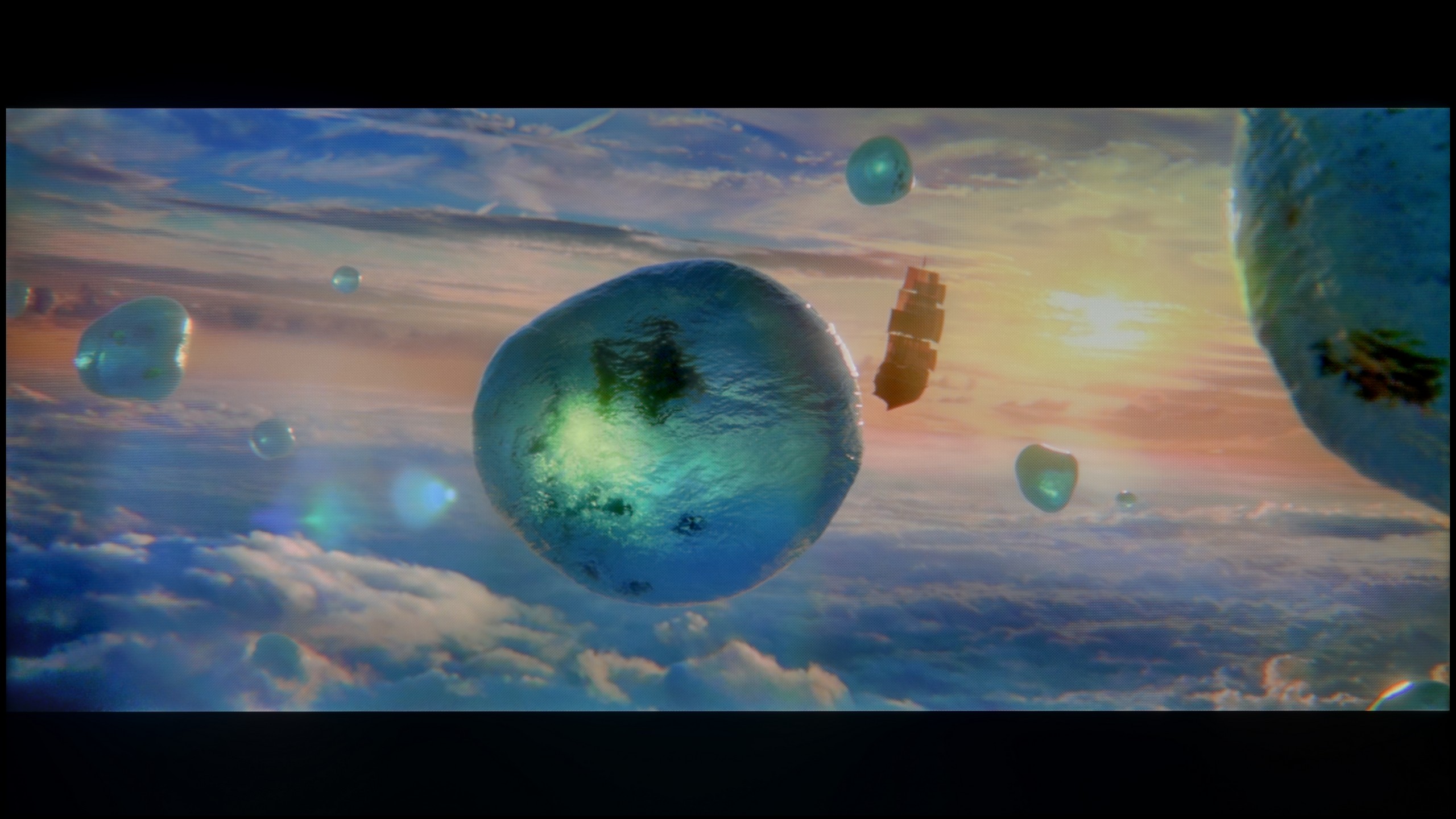
Scene from the movie “Billy Lynn” (about 1100 nits)

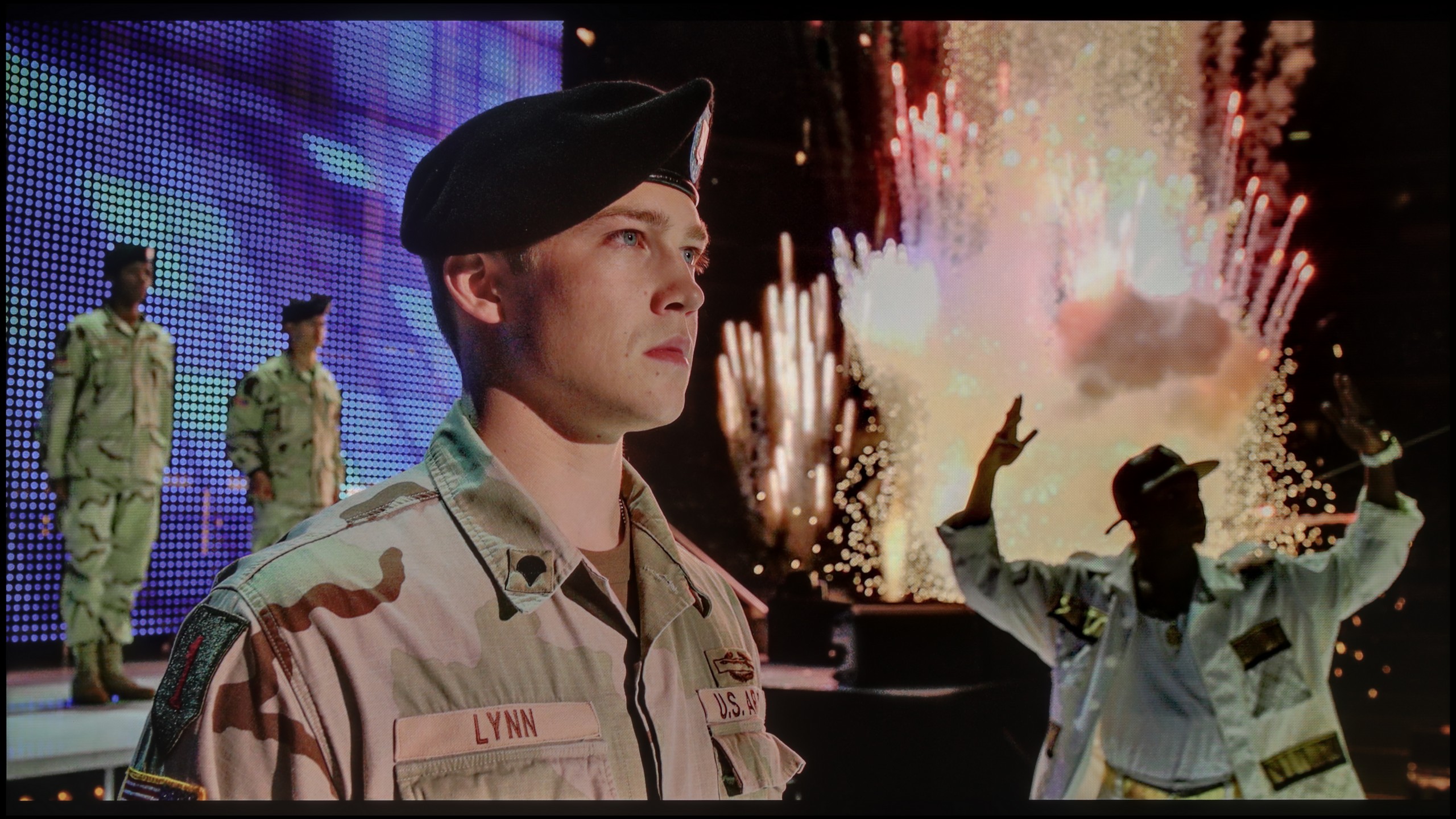
Static HDR10


Dynamic: HDR10+
Dynamic: Dolby Vision


HDR luminance chart:
LG QNED93A / QNED90A
HDR luminance
Samsung Neo QLED QN85D / QNX1D
HDR luminance
Samsung QN85D leaves us with mixed feelings regarding HDR quality. It can shine in synthetic luminance tests, reaching even 1000 nits – which makes scenes like those from 'The Meg' or the start of 'Life of Pi', where the screen is all bright, look truly impressive. However, in practice, the device has its limitations – especially when smaller bright elements appear on the screen. In such moments, brightness noticeably drops, and the HDR effect loses its punch. At brightness levels around 200-300 nits, the magic of HDR simply fades away, not delivering spectacular effects. However, it’s not that the television completely disappoints – coverage of the DCI-P3 colour gamut at 95% is quite decent, although it doesn’t stand out against the best competitors. Colours are well-rendered, but it's clear that HDR could make a bigger impression if brightness could be better controlled.
Although the number of local dimming zones in the LG QNED93A hasn’t directly translated to noticeably better contrast, it’s hard to deny this model one thing – it’s brighter than its predecessor. In synthetic tests, we recorded values around 1400-1500 nits, and more importantly, these results are reflected in real film scenes. In full-screen sequences flooded with whites or bright lights, the screen was able to maintain high luminance, providing a truly decent amazing HDR effect. Unfortunately, where the TV could show true class, that is in scenes requiring precision, all the magic dissipates. The dimming algorithms we mentioned earlier operate aggressively enough that small, bright objects – like distant lights, stars, or the moon – can almost completely disappear. Just look at the test scenes from the film Pan or Sicario 2 (screens 2 and 4) to see how subtle details are dimmed to the limits of their visibility. It’s a pity because a greater number of zones could theoretically translate to significantly better performance. Fortunately, there are also strong points. The QNED93A performs well in terms of colour gamut coverage, achieving around 96% of the DCI-P3 standard. As a result, colours in films look rich and full, and the image doesn’t lose intensity even in more demanding scenes. So, it can be said that the HDR in this model is solid, although the underdeveloped local dimming algorithms hinder its full potential.
Factory color reproduction
6.3/10
6/10


Factory Mode
After calibration
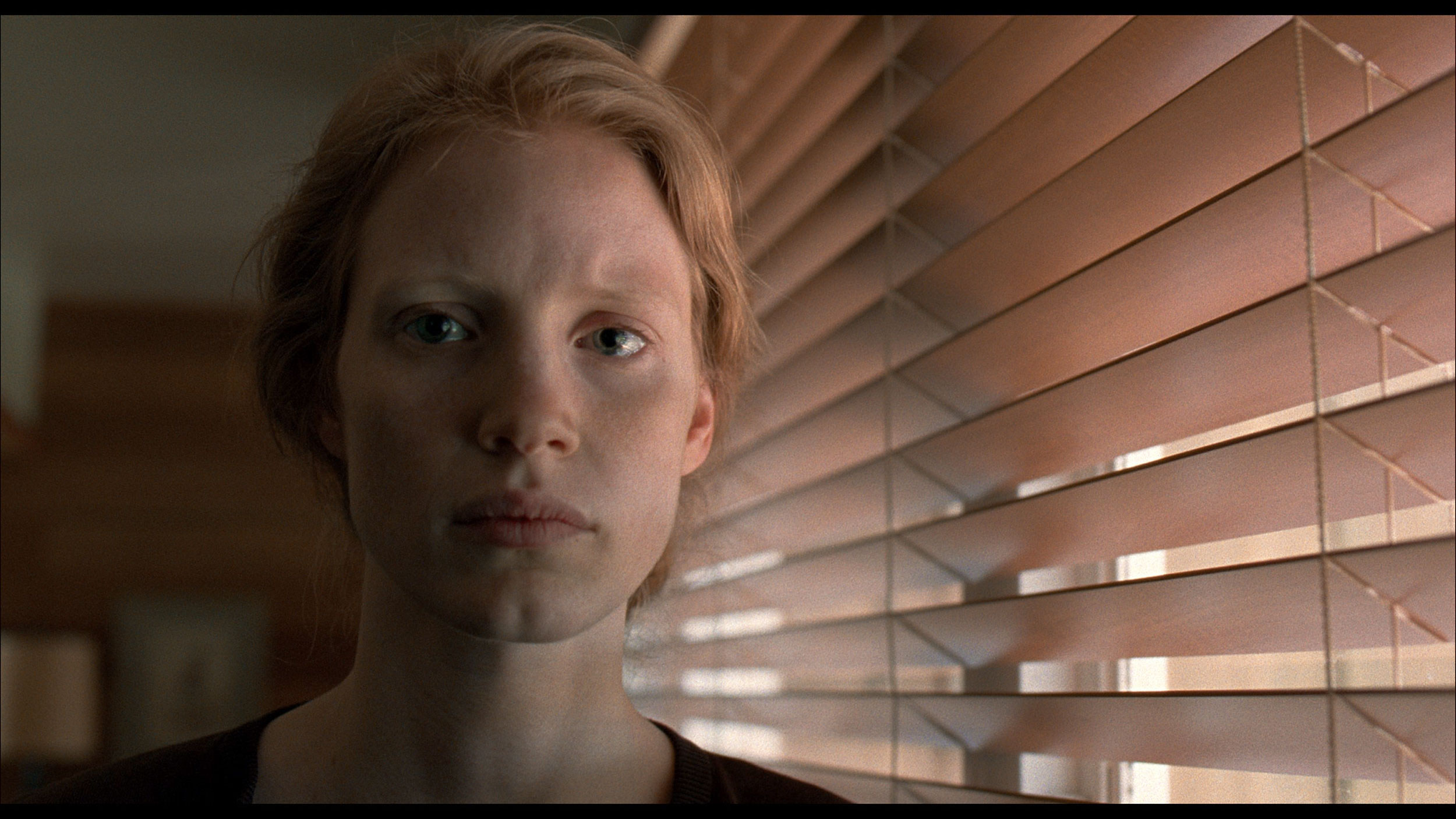
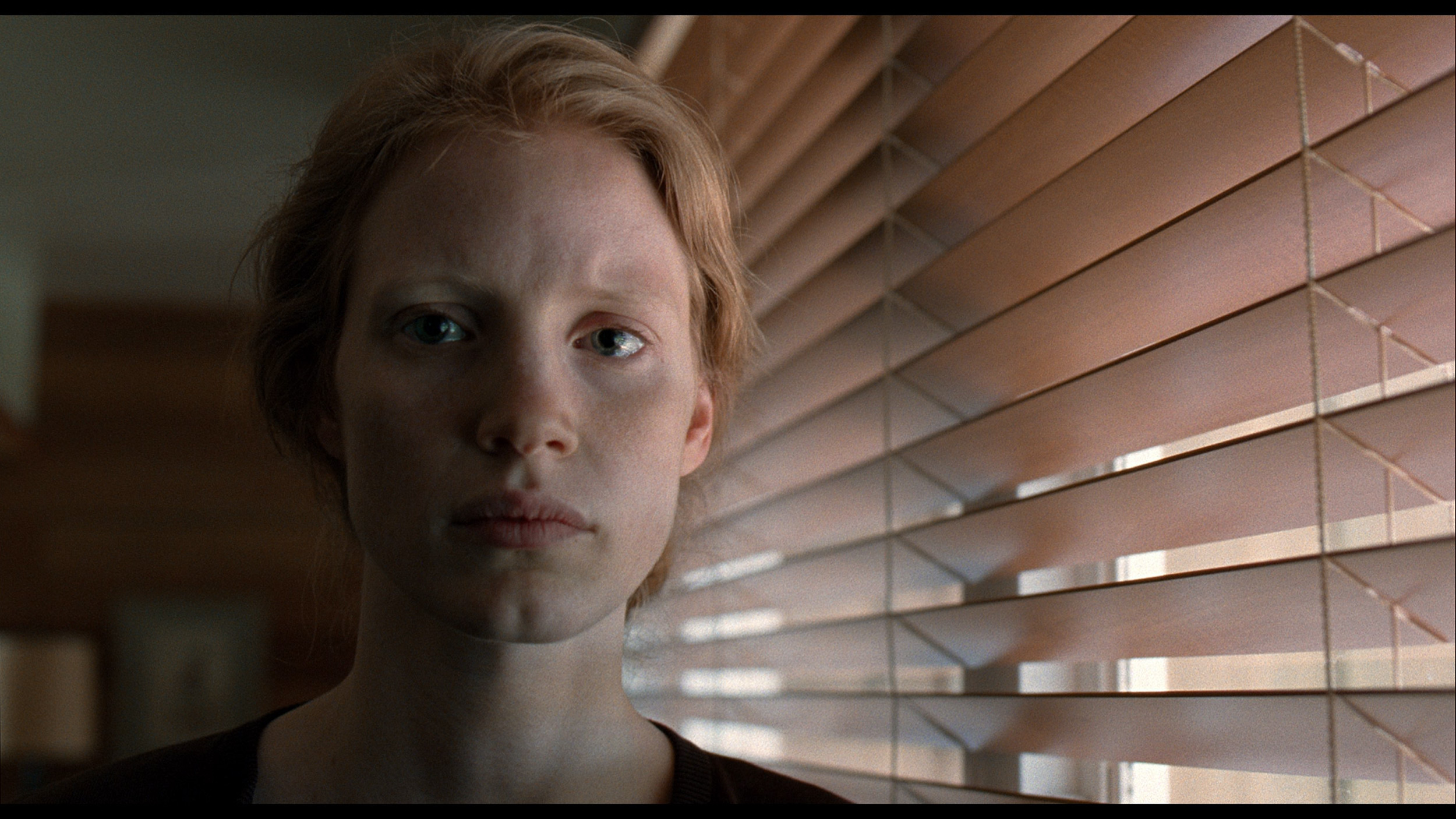
Factory Mode
After calibration
Samsung QN85D TV has been tested in the best available mode – Filmmaker. While one might expect its name suggests a mode perfectly suited for films, unfortunately, it has several significant issues.
When it comes to white balance for HD content, there is a noticeable dominance of red and blue, which makes the entire image take on pinkish hues – this is also confirmed by Colour Checker tests. This effect disturbs the naturalness of skin tones and many other elements, which is particularly evident in more demanding scenes. Initially, the white balance for 4K HDR content seems correct, but at the end of the graph, there is a significant spike in blue hues, affecting the final image quality and making the colours appear unnatural.
The gamma brightness characteristic is also not ideal – although it generally stays close to the reference value, there is a slight drop below 2.4, which can impact the perceived depth of shadows. The EOTF curve responsible for 4K content does not perform any better. There is a clear boost compared to the reference curve, leading to excessive brightness in some areas, thus losing the cinematic quality that the Filmmaker mode should provide. While it might initially seem that the effect is cinematic, unfortunately, the number of errors in colour and brightness reproduction is too significant to call it flawless.
In film mode (more specifically Filmmaker), the colour reproduction in the QNED93A was relatively accurate, although there were some reservations. In SDR content, the white balance leaned towards warmer tones, resulting in a slight yellowing across the entire screen. Gamma, on the other hand, led to a slight lightening of the image, making it look a bit less natural, especially in scenes that required precise shading (this is evident in the comparison photo). This isn't a problem that immediately stands out to every viewer, but more discerning individuals may feel that the image deviates from the intended aesthetic of the filmmakers. In HDR materials, the situation looked a bit different. The white balance here was quite good, ensuring that whites did not take on pink or unwanted green hues. However, the brightness management turned out to be an issue. An analysis of the EOTF curve revealed that at certain moments, the television could be distinctly too dark where it shouldn't be, losing some details and lowering the realism of scenes. This detracted from the HDR effects, which were theoretically meant to be the most impressive. For this reason, we decided to conduct a calibration.
Color reproduction after calibration
7.9/10
7.8/10

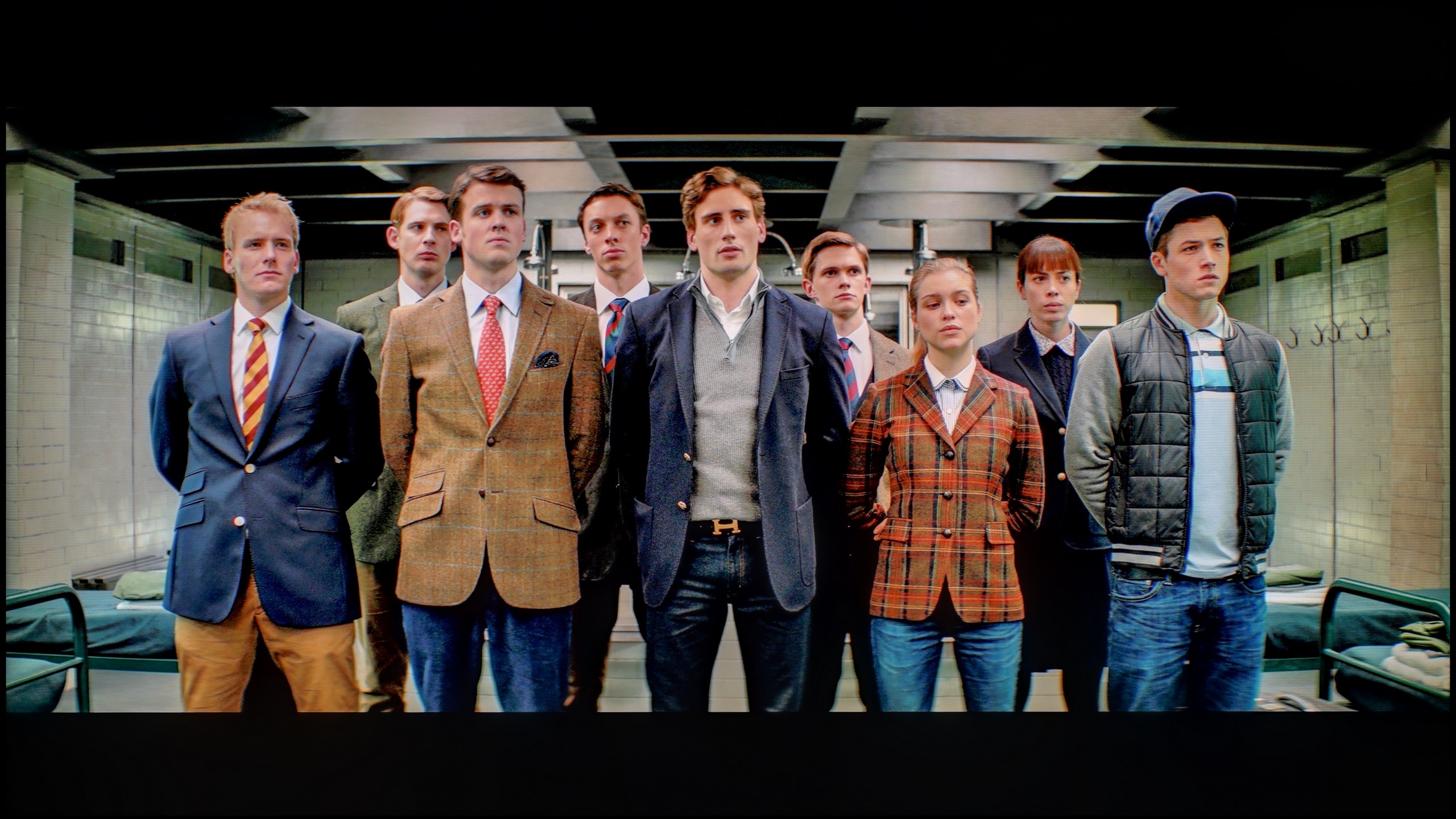

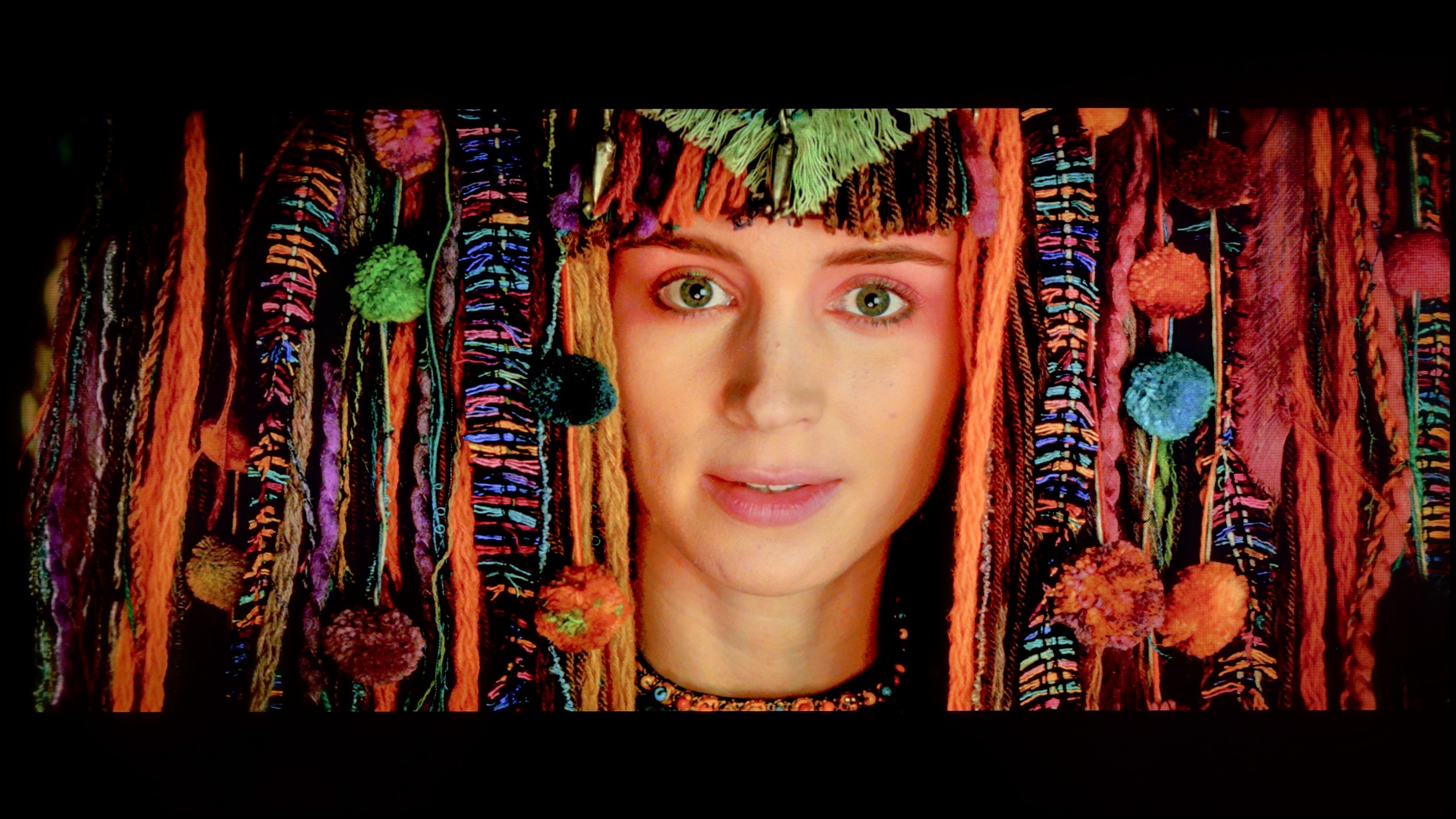
After professional calibration of the Filmmaker mode on the Samsung QN85D television, a significant improvement is noticeable, especially for HD/SDR content. The white balance has been completely free of major errors, and the brightness characteristics for this type of content have been significantly adjusted, allowing for a more natural and realistic image. Television, YouTube films, and other HD materials now look much better, with appropriately balanced colours and without the exaggerated hues that previously marred the experience.
However, the biggest issues arise with 4K HDR content. Despite the calibration, it's hard to speak of significant improvement in white balance here – the differences are cosmetic rather than essential. Brightness, governed by the EOTF curve, seems to be set according to the reference level in synthetic tests at first glance, but has its limitations during actual viewing in films. When analysing the EOTF curve in real film scenes, it becomes clear that the television struggles to maintain consistency in brightness. The effect is that mixed scenes still have their darkest elements boosted, leading to exaggerated contrasts, and completely dark scenes remain too dark, which negatively affects the visibility of details.
After professional calibration, the Filmmaker mode in the QNED93A has improved primarily where it matters most in everyday use. We managed to straighten the white balance and eliminate the yellowish tint in SDR content, which is what we watch most often – television, streaming services, or standard quality movies. As a result, the colours look natural and pleasant, making the overall viewing experience significantly more comfortable. In HDR mode, we also made corrections, but here the biggest issue turned out to be the EOTF curve. Although LG provides some leeway in the settings, the television still controls brightness on its own terms. It's clear that the local dimming algorithms are not fully refined and can ruin the viewing experience by dimming parts of the picture at inappropriate moments. Nevertheless, it’s worth opting for calibration of this model, especially the mode intended for everyday viewing.
Smoothness of tonal transitions
7.6/10
8/10

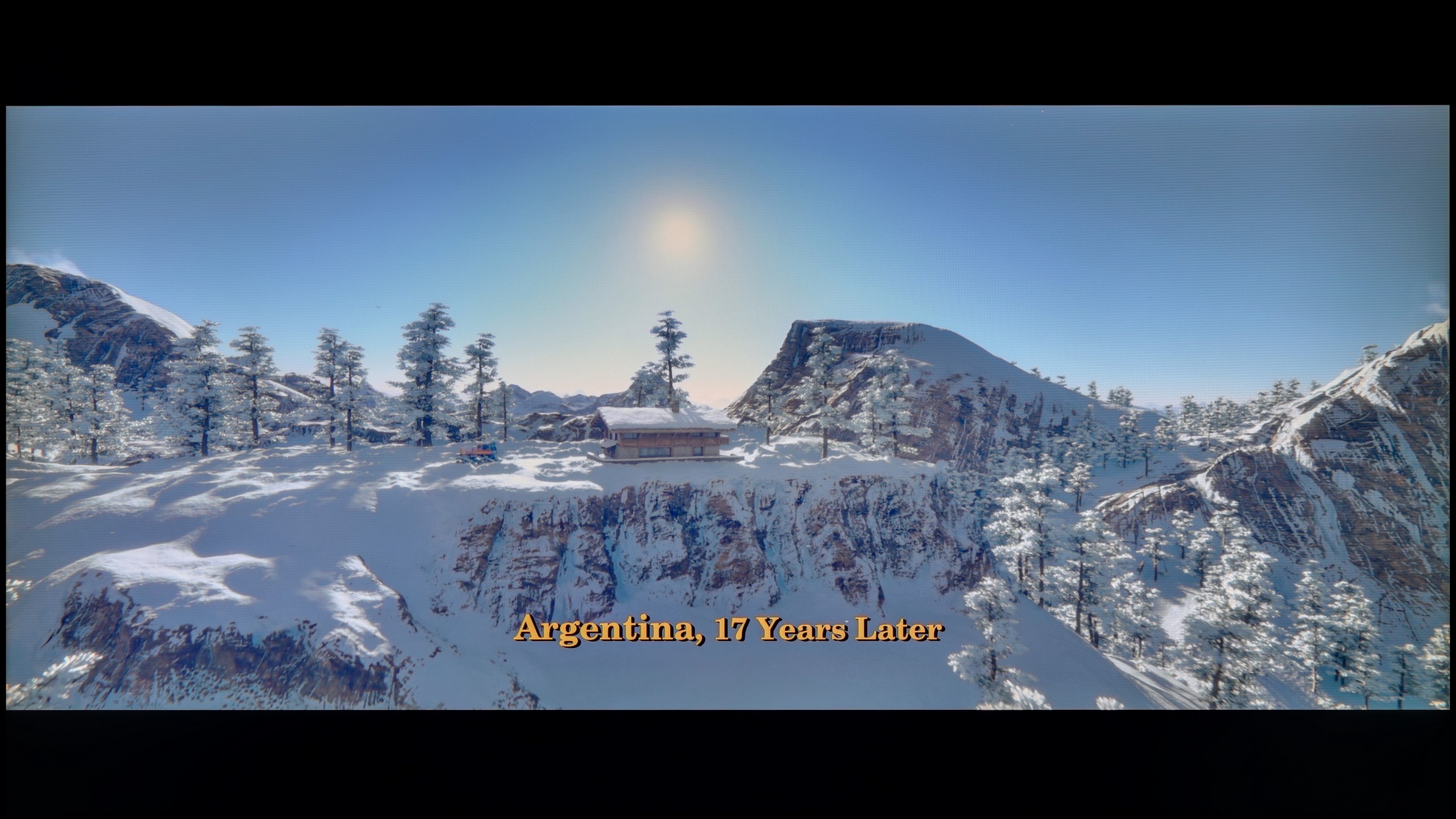

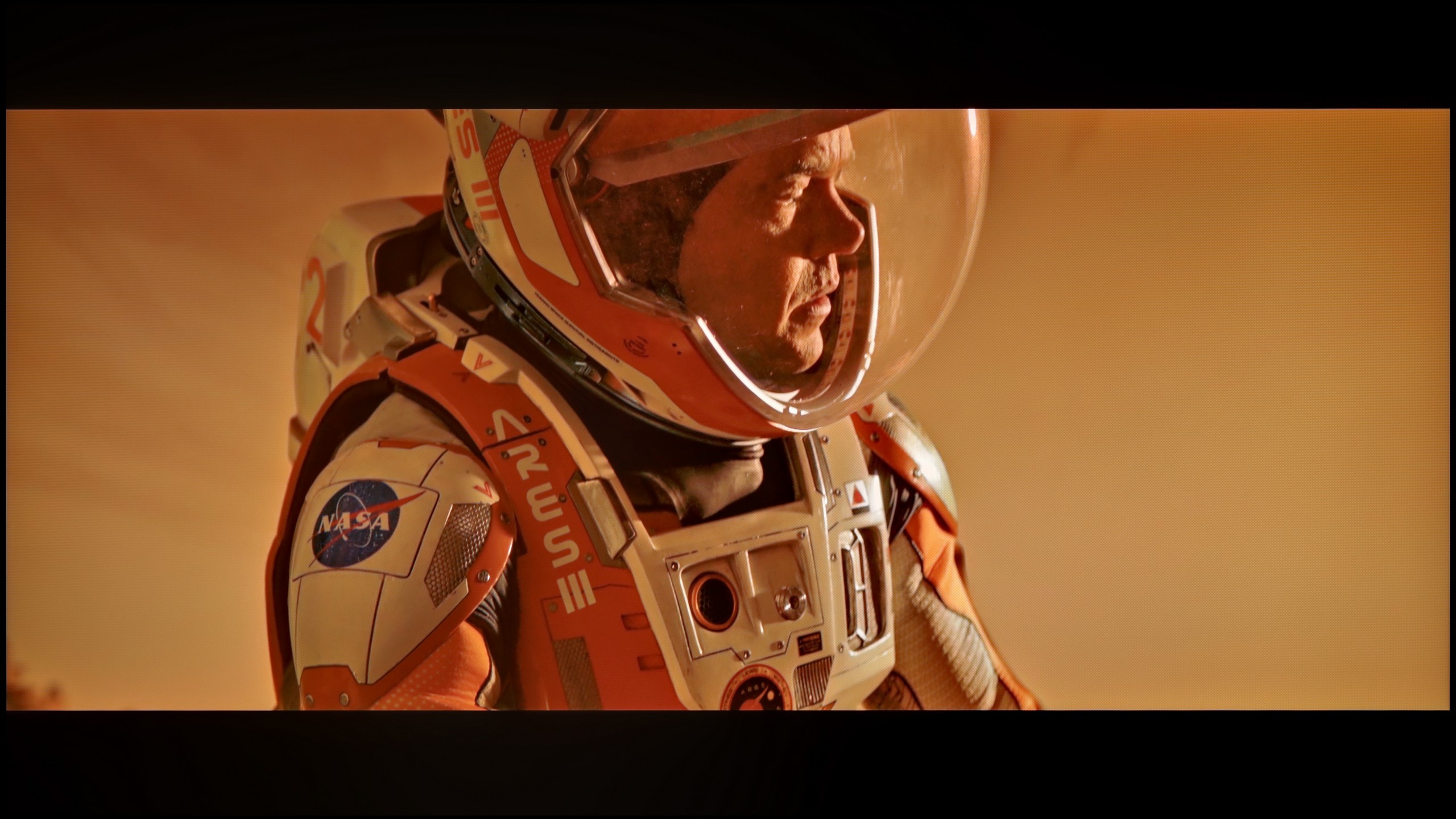

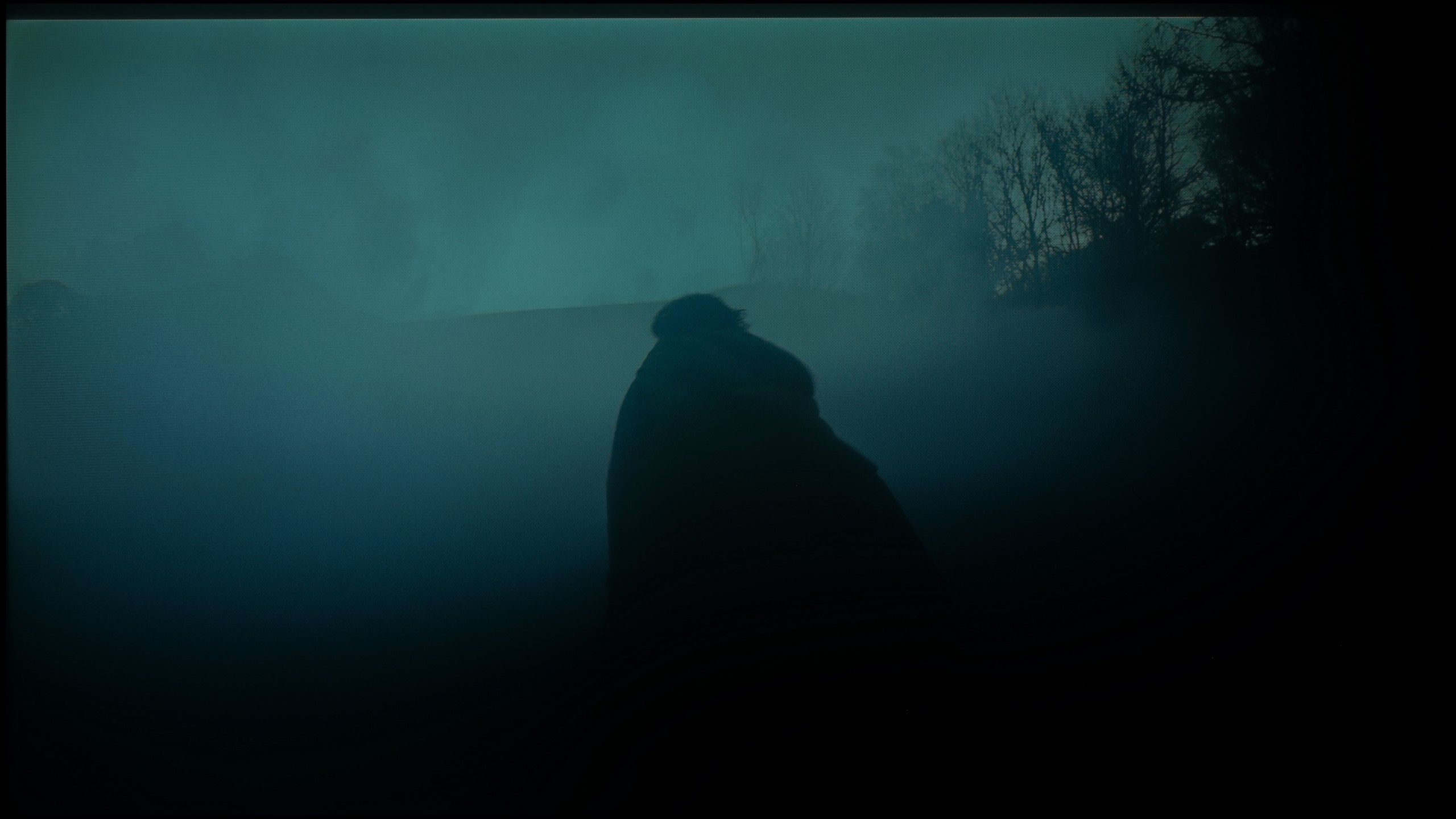

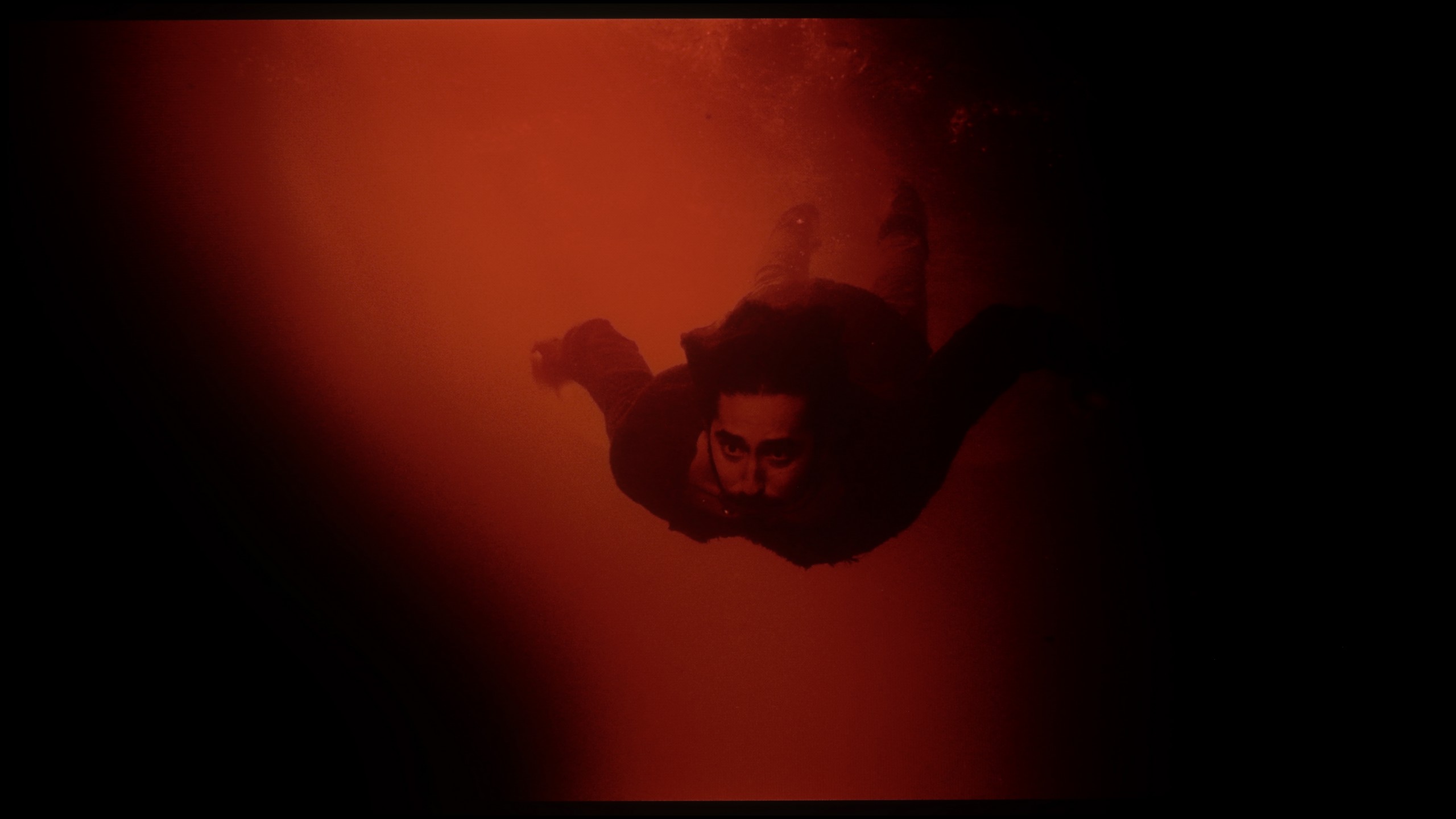




When it comes to tonal transition fluidity on the Samsung QN85D television, it’s generally very good. The tonal transitions are smooth, and there are no significant artifacts. However, more demanding users may notice some issues in certain scenes. For example, when blending darker colours, like in the scene with the red sea, subtle shortcomings can be observed. Similarly, in the case of lighter colours – the scene from the film 'The Martian' shows slight gradation issues, leading to subtle but noticeable transitions between shades. Despite these minor shortcomings, most users should be satisfied. The results are of a high standard and in most cases provide smooth, natural transitions between colours.
The smoothness of tonal transitions in the LG QNED93A is really impressive. In most scenes, there are no visible artificial colour banding or posterisation effects. Dark scenes, in particular, are surprisingly good – many TVs struggle in these, but here the image remains smooth and consistent. In brighter sections, one can notice some slight colour blending, but it’s not pronounced enough to be distracting. However, during testing, we encountered a noticeable DSE effect, known as “dirty screen.” On our unit, this effect was strong enough that in bright scenes, the corners noticeably darkened, giving the impression of vignetting. This may be a defect of the test unit, but during intensive viewing, it was hard for us to overlook.
Image scaling and smoothness of tonal transitions
7/10
7.8/10
Smooth transition function

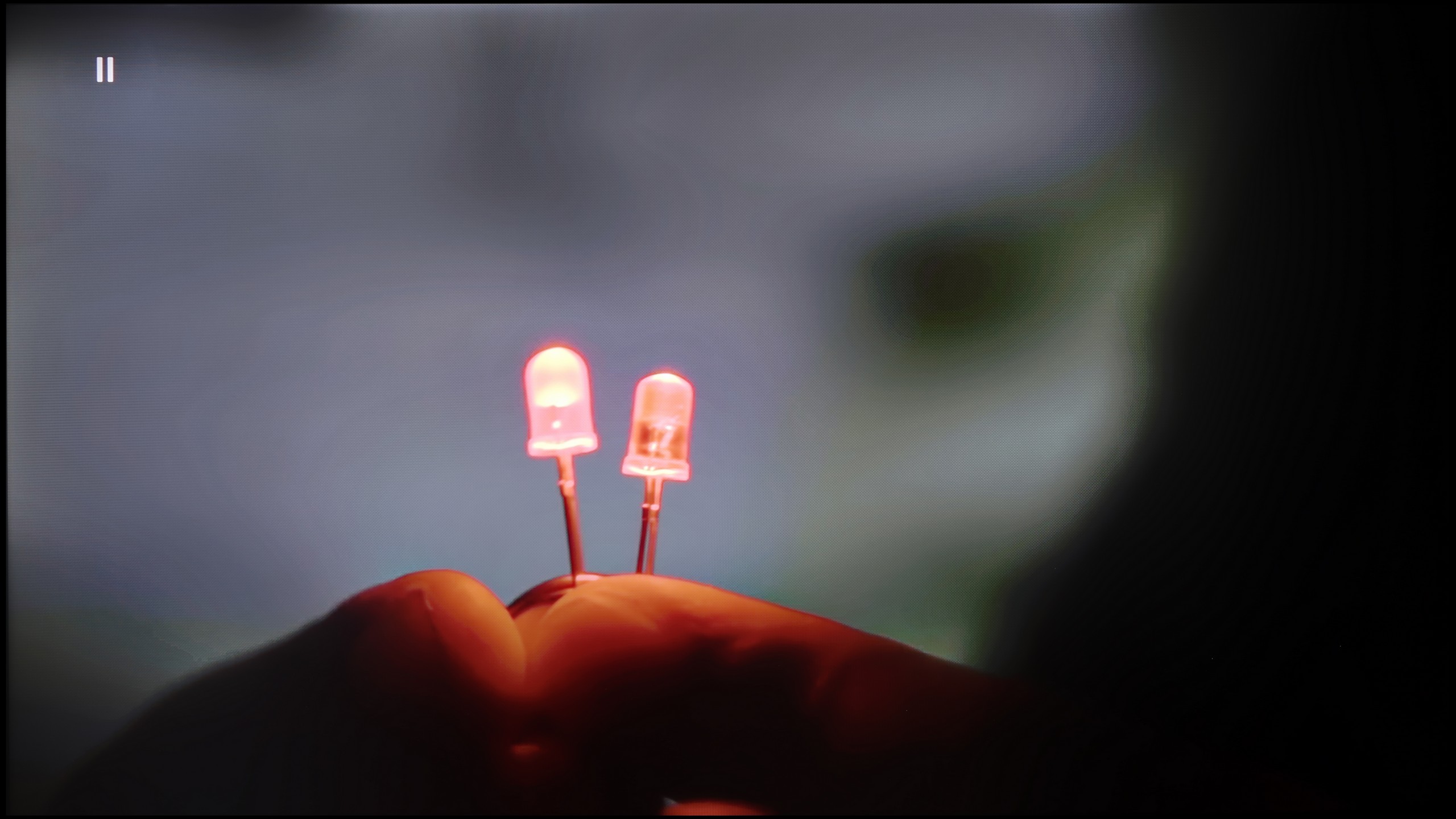
Image without overscan on the SD signal


When checking the fluidity of tonal transitions in low-resolution materials on the Samsung QN85D television, it’s worth noting the noise reduction feature, which significantly improves problematic tonal transitions. On the other hand, this feature also has its downsides – it removes film grain, which is an important element of many productions, giving them authenticity, and it can also soften the image. This may appeal to those who prefer a smoother picture; however, for lovers of the authentic look of films, using this feature should be considered carefully.
Regarding image scaling, the television performs very well. The model's figure is presented correctly, without noticeable distortions, and the branches in the background do not have excessive artificial sharpness, which is often a problem when scaling lower resolution materials. The high capabilities of the image processor are evident here, which can effectively process lower quality materials, ensuring good final quality.
The LG QNED93A turns out to be a very solid television for everyday use. Its image processor performs excellently with upscaling, making even older films or free-to-air television sharper and more detailed. During the screening of 'The Godfather,' it’s clearly visible how upscaling brings out additional details from the image – the characters’ faces and the texture of their clothing look significantly clearer than in the original material.
The digital image processing also deserves praise. The television is equipped with a function that reduces unwanted colour banding and screen irregularities. It works best in the 'Medium' setting – subtly smoothing tonal transitions without overly interfering with the image. This way, the natural film grain is preserved, and the screen does not appear artificially smooth. Perhaps in some scenes, slight colour banding can still be noticed, but in practice, the effect is more advantageous than with a stronger intervention from the algorithm.
Blur and motion smoothness
7.5/10
7.9/10

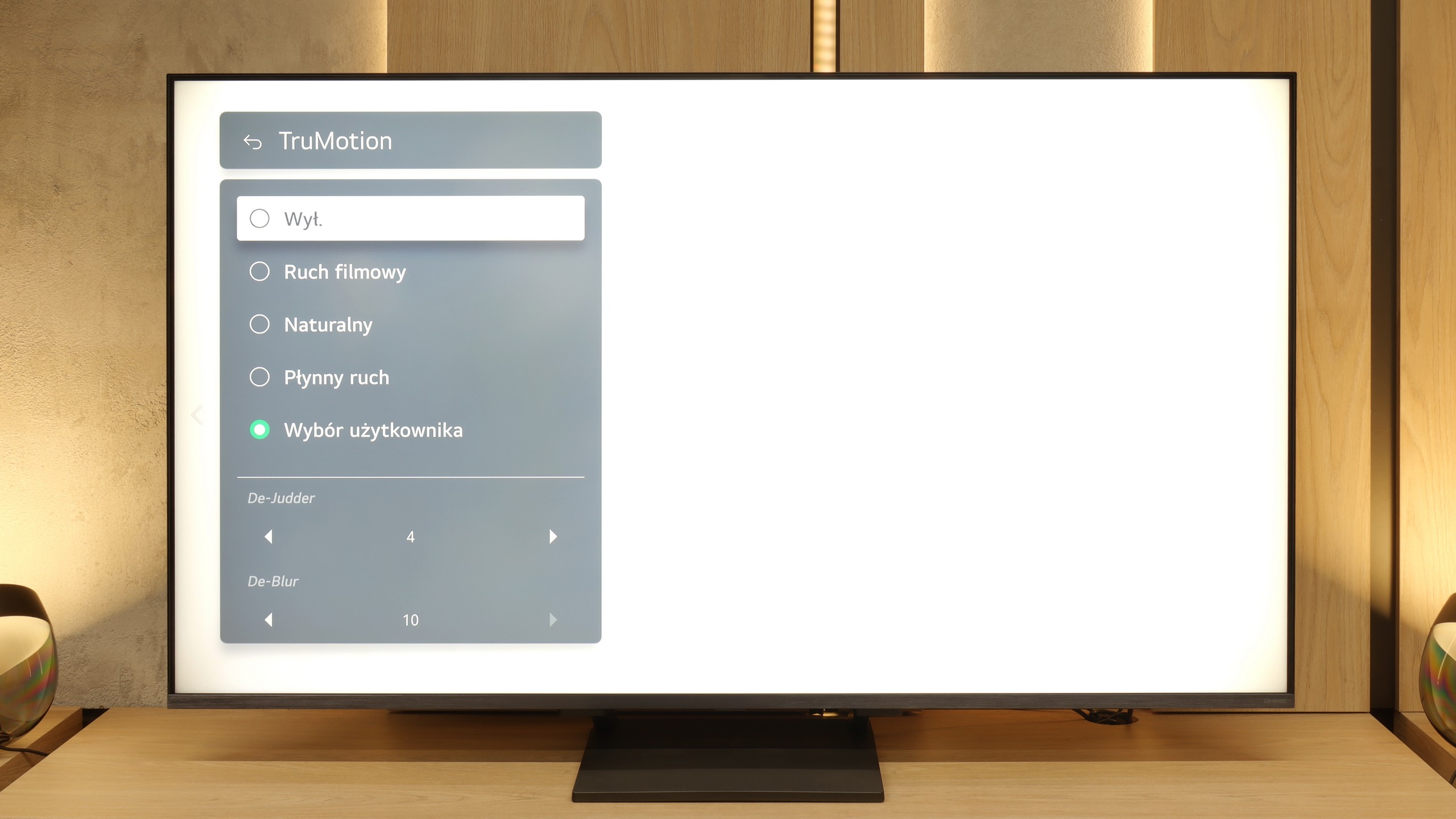
Blur (native resolution, maximum refresh rate):



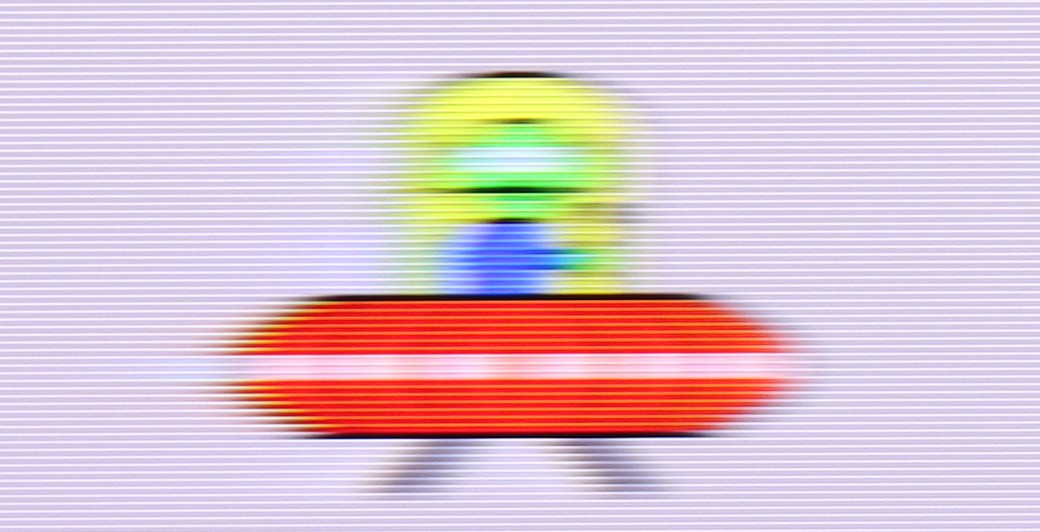
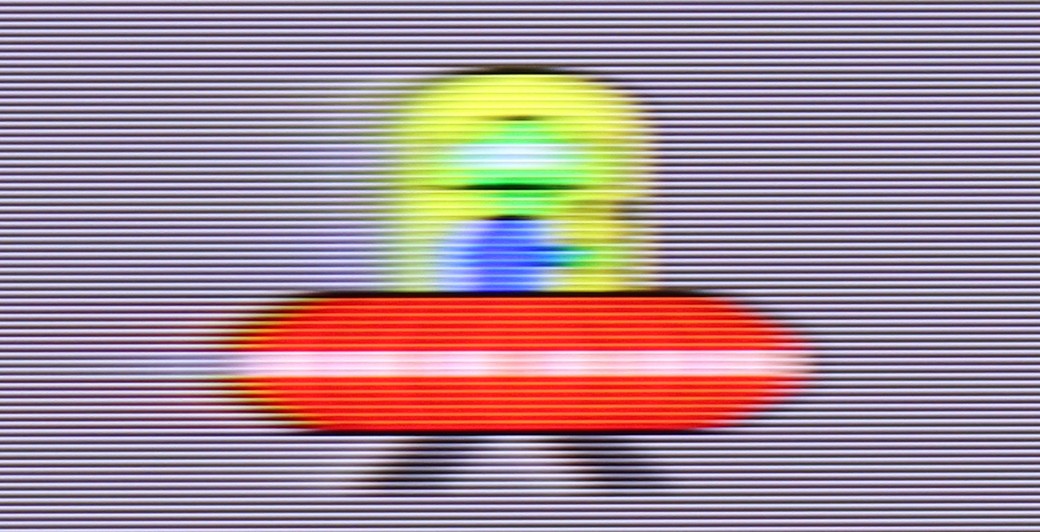
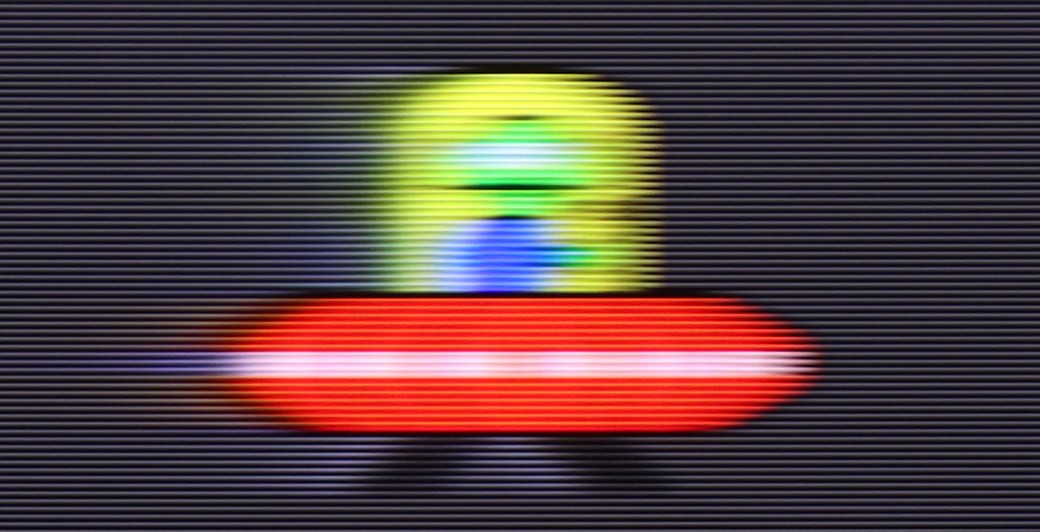
Blur (BFI function enabled):
Image flickers in this mode
Image flickers in this mode

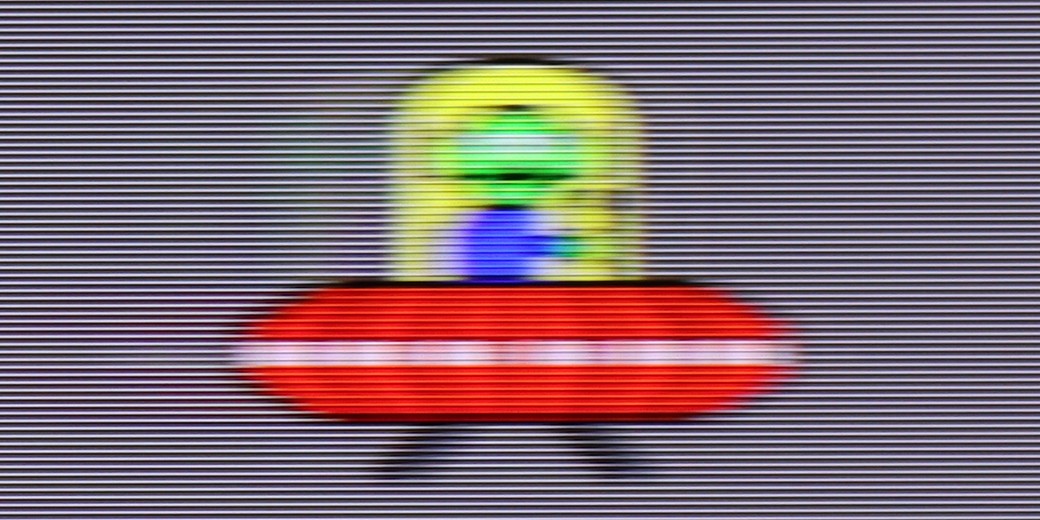

Smużenie ():
Smużenie (4K@144Hz):

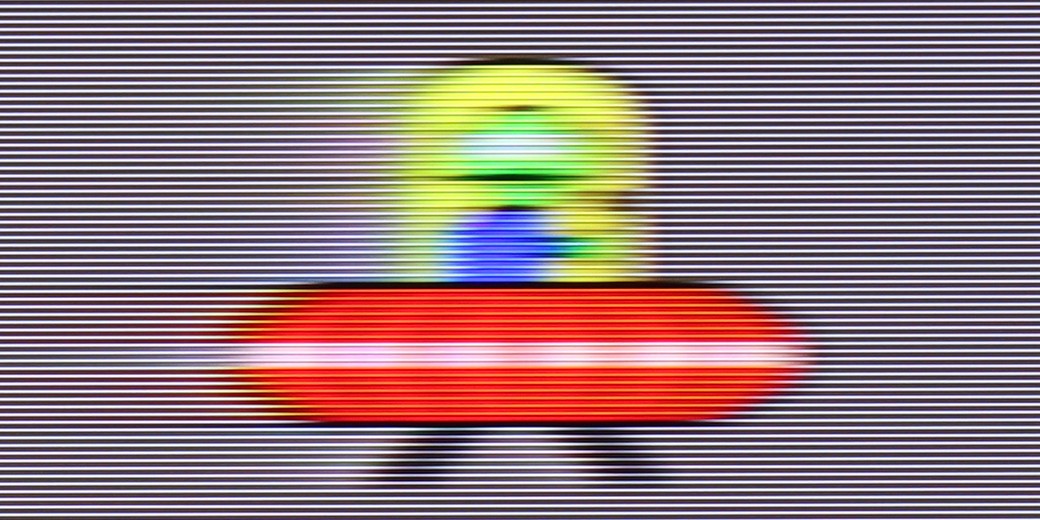
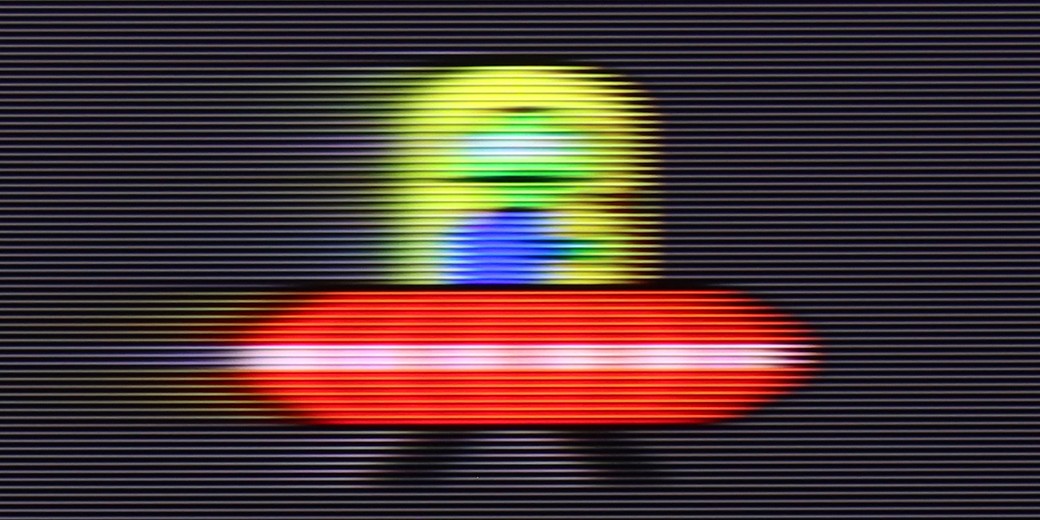
Samsung QN85D TV is equipped with a 120 Hz refresh rate panel, which should satisfy both gamers and sports enthusiasts by offering a smooth and dynamic image. There are options to enhance fluidity, such as the blur and judder reduction feature, which allows precise motion fluidity adjustments on a 10-point scale. The blur reduction increases the sharpness of fast-moving objects, making action scenes more readable, while judder reduction smooths out motion, eliminating the “judder” effect. Ghosting is generally well controlled, though minor imperfections can be visible in more demanding scenes, especially when an object moves against a dark background. Additionally, the TV offers a BFI (Black Frame Insertion) feature at a 60 Hz refresh rate, which can significantly improve motion fluidity experience, although at the cost of image flicker, which might be bothersome for some users.
LG QNED93A has been equipped with a 144 Hz panel. This is primarily a nod to gamers, but the fact that higher refresh rates are increasingly appearing in televisions can be viewed positively. In everyday viewing, 120 Hz remains key, and in this regard, the QNED93A performs well. The manufacturer also provides the option to adjust the picture thanks to the TruMotion system – the De-Judder and De-Blur sliders allow you to choose between a cinematic motion feel with visible frames and full smoothing with theatrical motion.
Console compatibility and gaming features
9.5/10
9.8/10
- ALLM
- VRR
- VRR range48 - 120Hz48 - 144Hz
- Dolby Vision Game Mode
- Correct implementation of HGIG
- 1080p@120Hz
- 1440p@120Hz
- 4K@120Hz
- Game bar

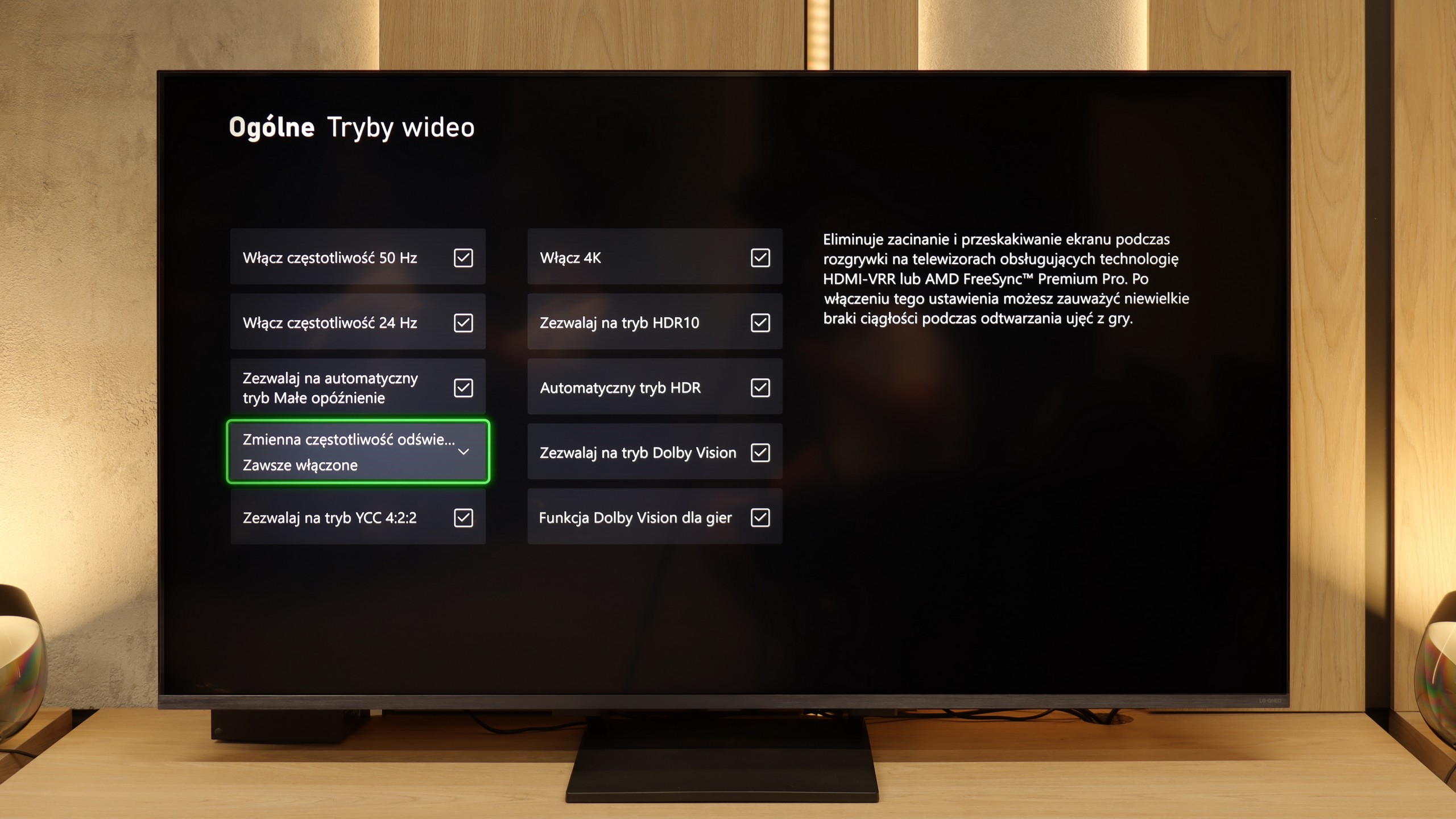

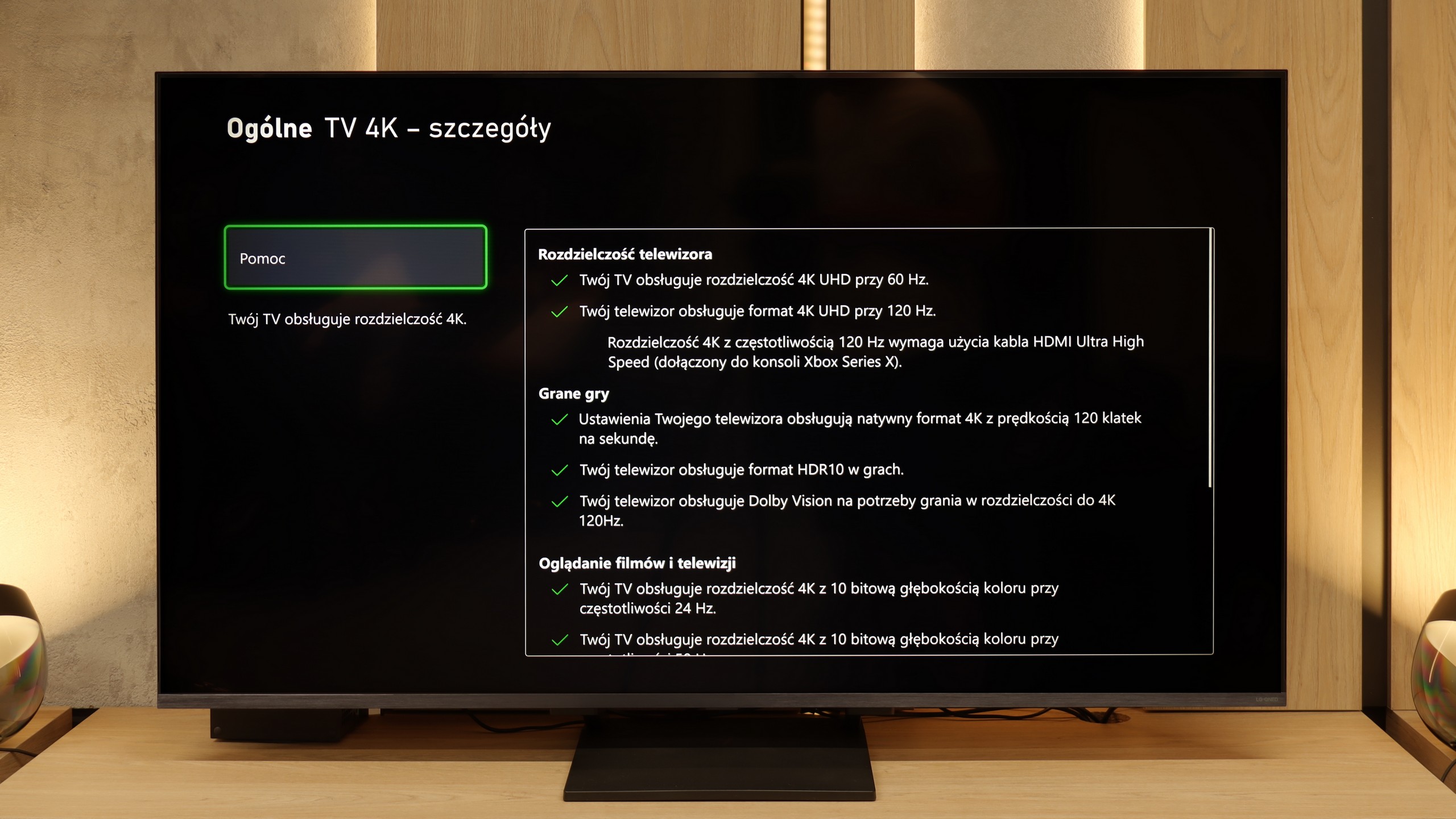

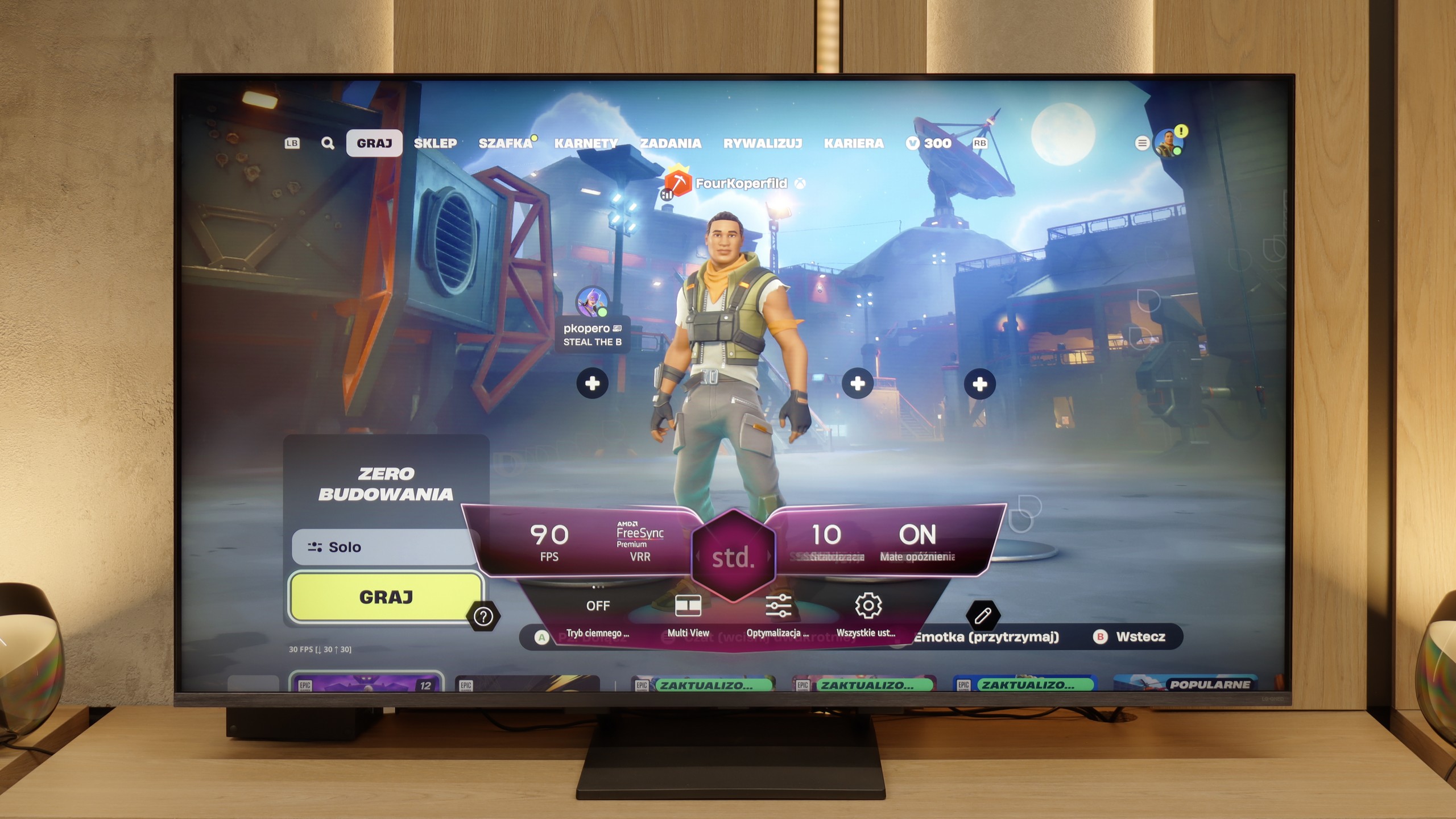

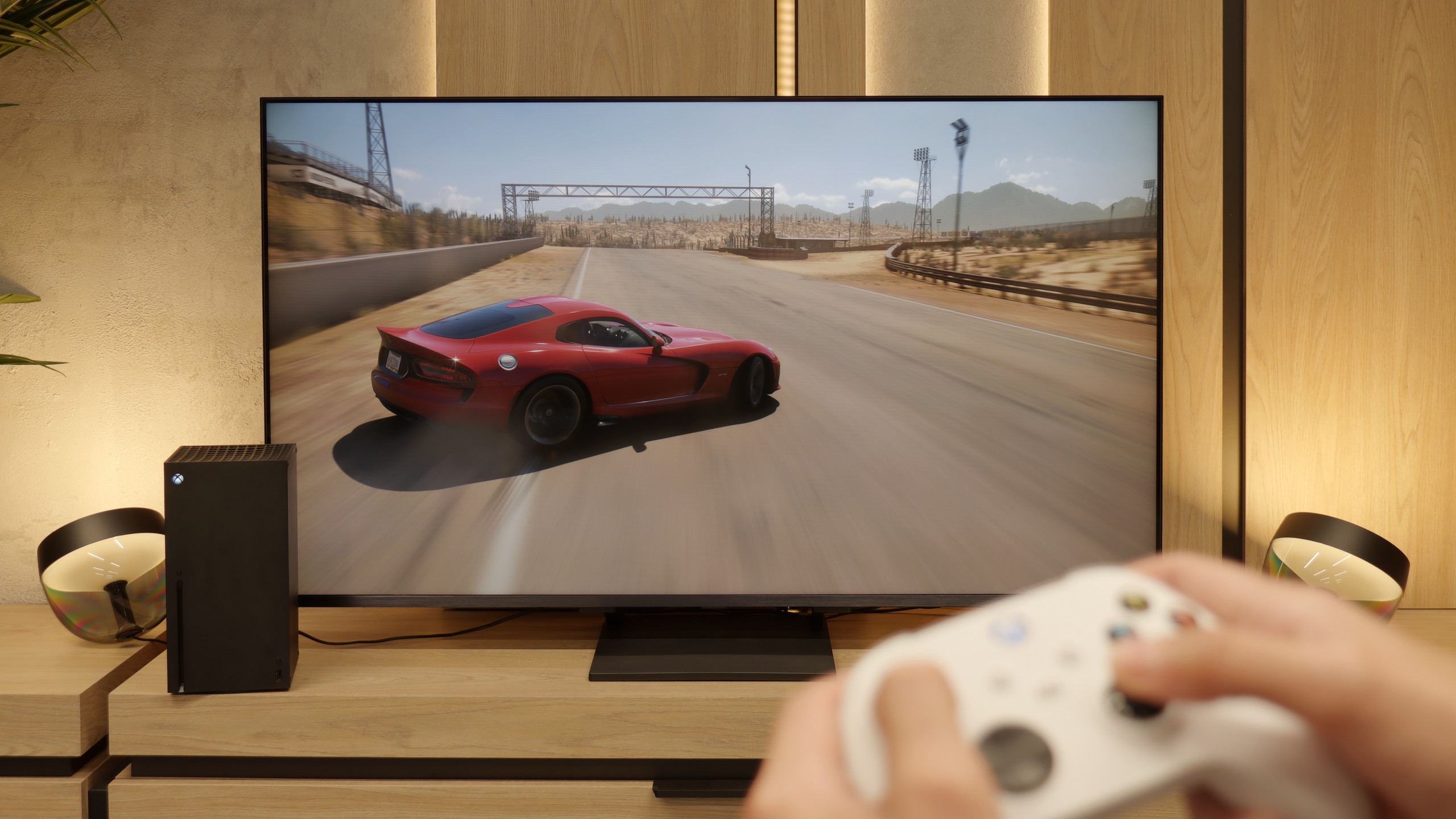
The Samsung QN85D television is an excellent choice for gamers, offering a wide range of features that enhance the gaming experience and make it even more exciting. With a 120 Hz refresh rate panel, the image is incredibly smooth, which is crucial during dynamic scenes in action games. The television also boasts low input lag, allowing for nearly instant reactions to player commands, which translates into better control over characters and events on the screen.
In addition, the QN85D Samsung supports VRR (Variable Refresh Rate) and ALLM (Auto Low Latency Mode) technologies, which optimise image smoothness and reduce delays by automatically adjusting the television to the needs of gamers. Moreover, the Xbox app allows for cloud gaming without the need for a console, which is a big plus for those who want to enjoy their favourite titles without additional hardware – a feature that sets Samsung televisions apart.
The Auto Motion Plus Game feature is another aspect worth highlighting. This motion smoothing technology creates the illusion of more frames per second – as a result, games at 30 fps appear smoother, resembling gameplay at 45 fps, while games at 60 Hz come closer to 90 Hz. Most importantly, this feature does not introduce significant lag, ensuring that gaming comfort is not compromised. This allows gamers to enjoy a smoother image without compromising responsiveness.
LG QNED93A is a television that has undoubtedly been designed with gamers in mind. Right from the start, we get a complete package – all four HDMI ports operate in 2.1 standard, so whether we connect a console, a PC, or a receiver, we have full compatibility. This is important because many manufacturers still limit themselves to two ports, and here nothing stands in the way of having maximum capabilities for all the equipment. There’s also an automatic game mode (ALLM), which automatically switches the television to the appropriate settings when the console is turned on, as well as variable refresh rate (VRR). This means the image doesn’t stutter or glitch, even when the frame rate drops – whether in dynamic shooters or during races.
The 144 Hz panel gives an additional advantage in computer games. While 120 Hz is enough for consoles, the QNED93A allows PCs to push even more – every movement, every glance to the side is refreshed faster, which makes a difference especially in e-sports. The manufacturer also considered HDR in games – the television supports HGiG mode, which are guidelines intended to ensure that the lighting effects are exactly as the game developers intended. To top it off, we get Game Bar – a special information bar called up on the screen that shows parameters in real time. You can check the frame rate, active VRR functions, or input lag levels. This solution is useful not only for settings enthusiasts but for anyone who wants to quickly check what mode the television is operating in and whether everything is working as it should.
Input lag
9.9/10
9.8/10
SDR
HDR
Dolby Vision
Samsung QN85D impresses when it comes to input lag value. The television achieves outstanding results – below 15 ms for 60 Hz content and around 10 ms for 120 Hz content. This allows gamers to enjoy instantaneous responses to their actions, especially in dynamic games where every millisecond counts. Such low input lag makes gameplay more responsive and natural, enhancing the overall experience while playing.
In the delay field, the LG QNED93A has nothing to be ashamed of. The television responds instantly to our actions, which is evident from the first tests with the controller in hand. In 120 Hz mode, the input lag drops to around 7 ms, meaning almost immediate reaction – shots, passes, or precise movements of the stick are instantly reflected on the screen. For 60 Hz content, the result slightly increases to just under 15 ms, but it still remains within the full comfort zone. An interesting feature is the Dolby Vision mode for gaming, which on the QNED93A works with the Xbox Series X console. Here, the lag increases to about 20 ms. In theory, this could be considered a deterioration, but in practice, it's still a very good result. Even with such a demanding picture standard, gameplay remains dynamic, and the differences in control are practically imperceptible.
Compatibility with PC
7.6/10
8.6/10

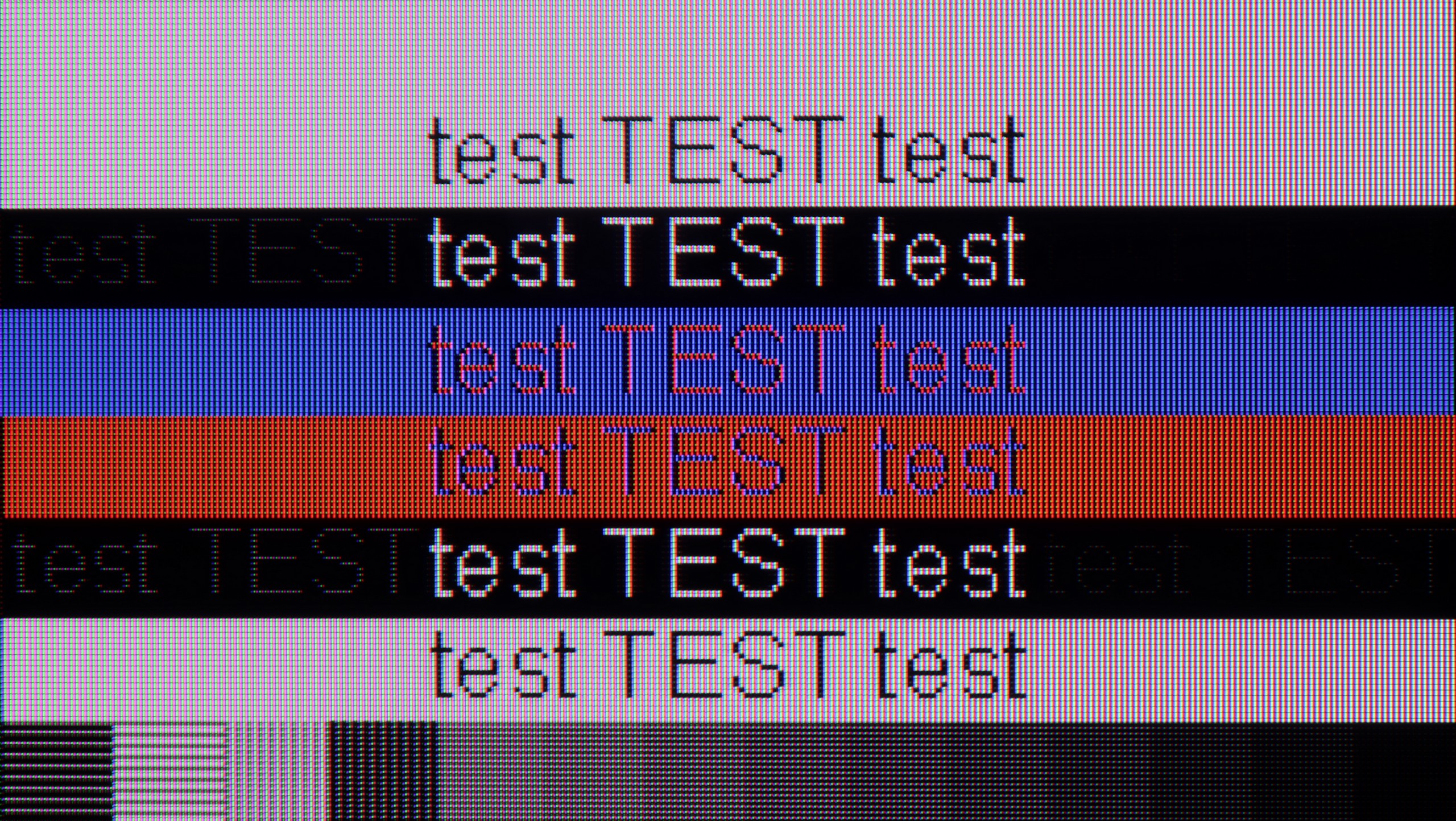
Samsung QN85D could be a good option as a computer monitor. Thanks to support for chroma 4:4:4 (available only in "Game" mode), text on the screen is clear and easy to read, which is crucial for those working with word documents or spreadsheets. A major advantage of this model is its exceptionally low input lag in "PC" mode – just 9 ms, which is really impressive and provides high fluidity and responsiveness, making it suitable for both work and gaming. However, there are some drawbacks. When displaying fonts on a dark background, an issue arises – when zooming in on an image, it can be seen that the horizontal lines are darker than the vertical ones. This is due to the fact that the sub-pixels in those areas do not light up fully, which may be a result of oversight on the manufacturer's part in optimising the algorithm responsible for displaying thin lines. As a result, the quality of text on a dark background is not ideal. Despite this, the television still remains a very good choice as a PC monitor, especially considering the low input lag and support for chroma 4:4:4.
A new feature in this year's model is full support for 144 Hz refresh rates, which PC gamers will appreciate. The QNED93A works with both Nvidia graphics cards, offering compatibility with G-Sync, and AMD products, where it operates with FreeSync Premium Pro. Thanks to this, gameplay is smooth, without screen tearing or stuttering, and the panel performs very well in dynamic e-sports titles and demanding AAA games.
Equally important is the clarity of the image for everyday work. The TV supports chroma 4:4:4, so fonts in Windows and apps are sharp and clear. However, we noticed a minor detail – with a dark background and bright letters, subtle horizontal stripes may appear due to the arrangement of subpixels. This is a minor detail that does not affect the comfort of using the TV on a daily basis, but perfectionists may notice it after prolonged text interaction. However, we don’t think anyone would want to work on a 55-inch screen from less than 1 metre away 😉.
Viewing angles
2.9/10
2.9/10
The Samsung QN85D television, due to its VA panel, has quite poor viewing angles. When viewed from the side, colours lose their intensity, and the image becomes noticeably less contrasted. This is a typical drawback of VA panels, which offer significantly worse picture quality when viewed from wider angles. However, directly in front of the television, the situation looks much better – the VA panel then provides deep blacks and better contrast, which is a big plus if the television is mainly watched while sitting directly in front of the screen.
QNED93A uses a VA panel, and that means one thing: the category of viewing angles becomes its Achilles' heel. Already at a tilt of around 45 degrees, brightness drops by up to 80%, and colours start to noticeably fade. This is the natural price for the high contrast offered by VA panels. There is no additional coating to improve angles, as is found in some more expensive models, so the QNED93A looks best when viewed head-on. If you’re planning a large family viewing, where some viewers will sit further to the side, you need to be aware that the image won't be as attractive as it is in the centre of the screen.
TV efficiency during daytime
7.3/10
6.2/10

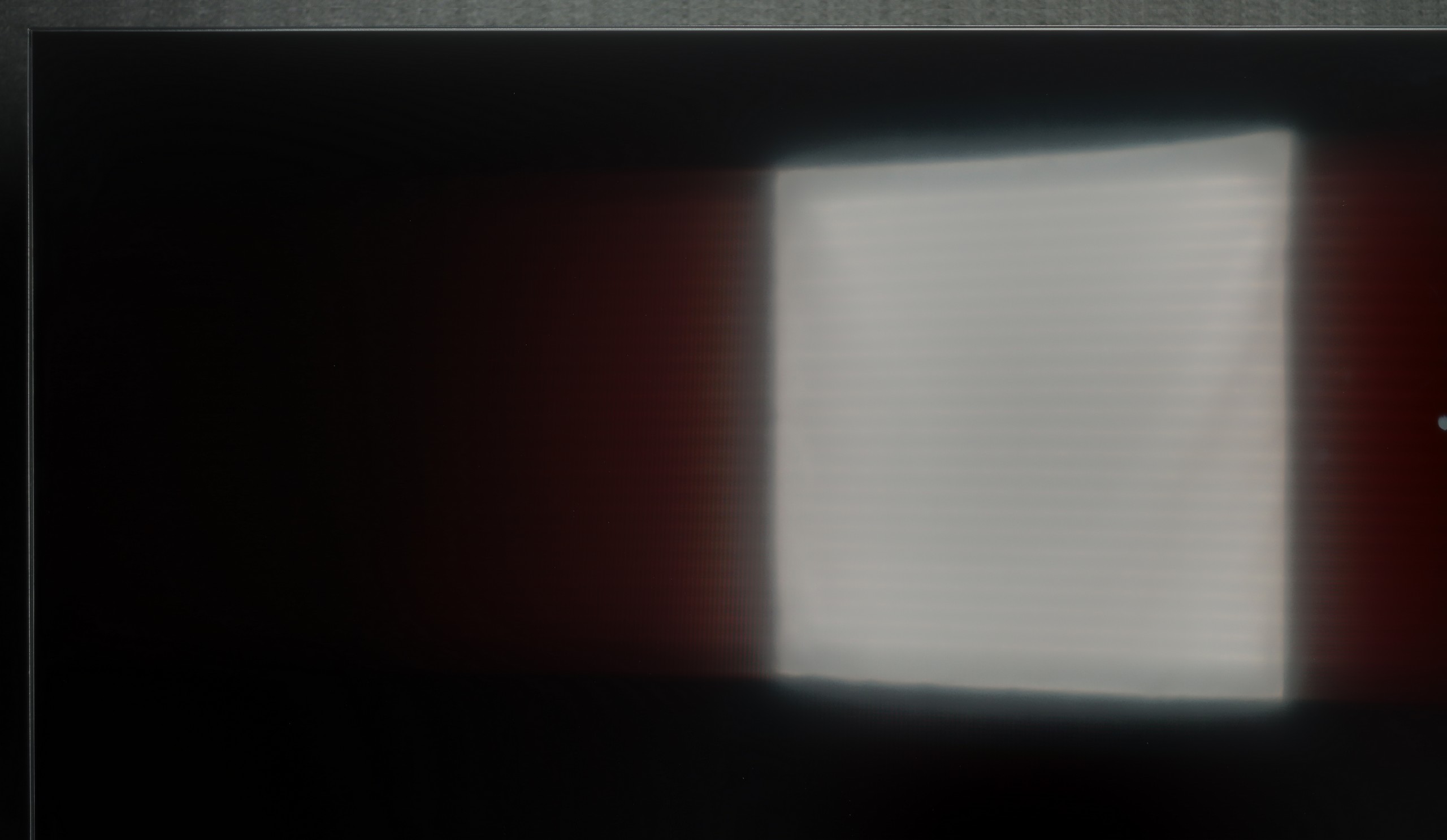

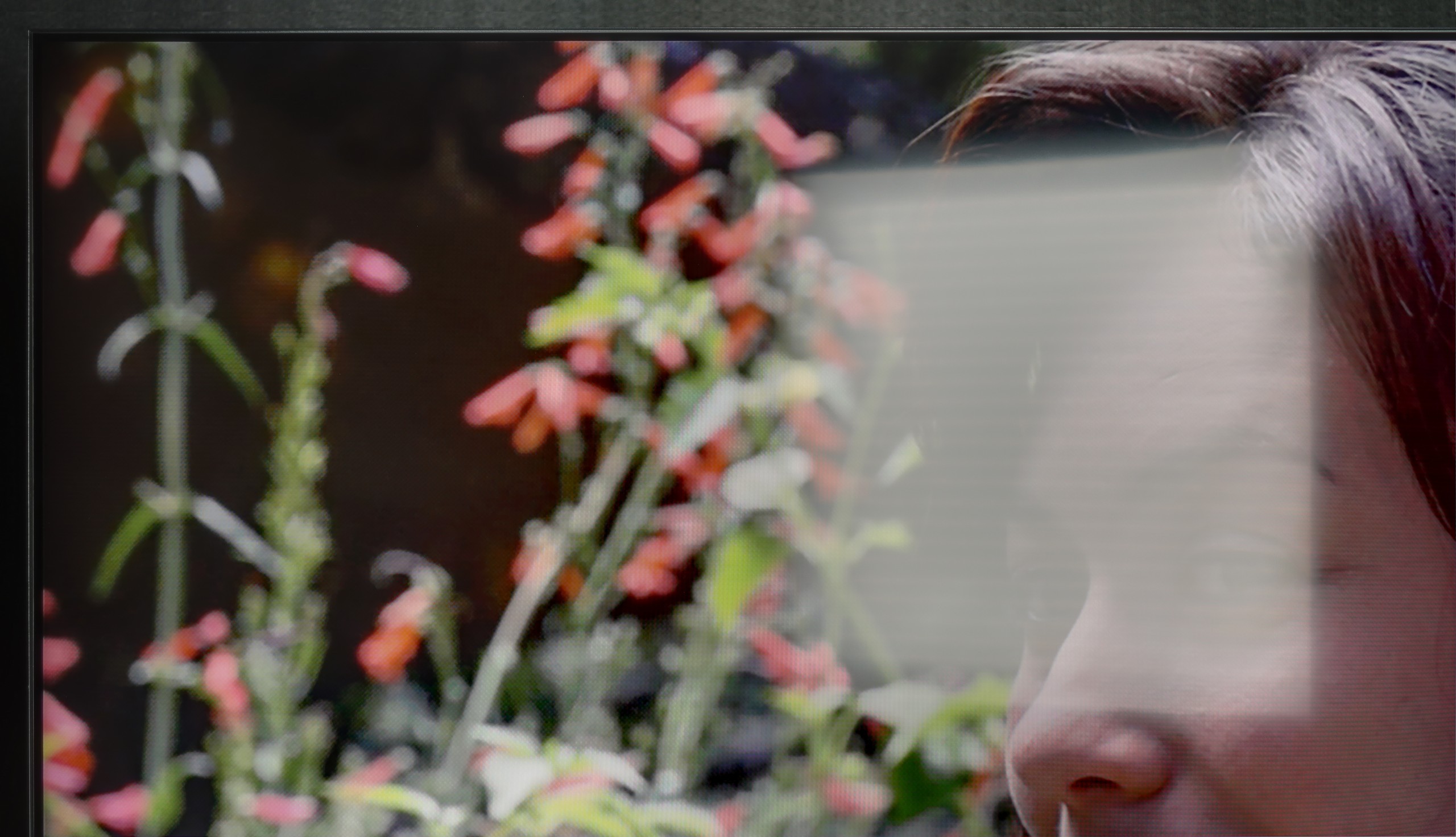
Matrix brightness
Average luminance SDR
LG QNED93A / QNED90A: 546 cd/m2
Samsung Neo QLED QN85D / QNX1D: 825 cd/m2
Samsung QN85D TV performs very well in bright daylight conditions. Although the satin panel moderately suppresses reflections, the brightness level of 825 cd/m² is truly impressive. Even in direct sunlight, the television handles itself very well, providing a clear and sharp image, and the largest external light sources do not pose a significant problem. This makes this model a good option for rooms with a lot of natural light.
LG QNED93A uses a satin matrix, which moderately deals with reflection suppression. It is definitely not at the level of matte screens, but it does not have the feeling of a mirrored surface like models with a glossy finish. This means that reflections are not as distracting, and the colours maintain their intensity even when light from the window hits the screen. The brightness is also a plus. The average level in HDR mode hovers around 550–600 nits. This means that the TV performs well in well-lit rooms, and you can enjoy viewing even when watching movies during the day, with only partially closed blinds. As a large screen in the living room, the QNED93A performs really well.
Details about the matrix
Subpixel Structure:

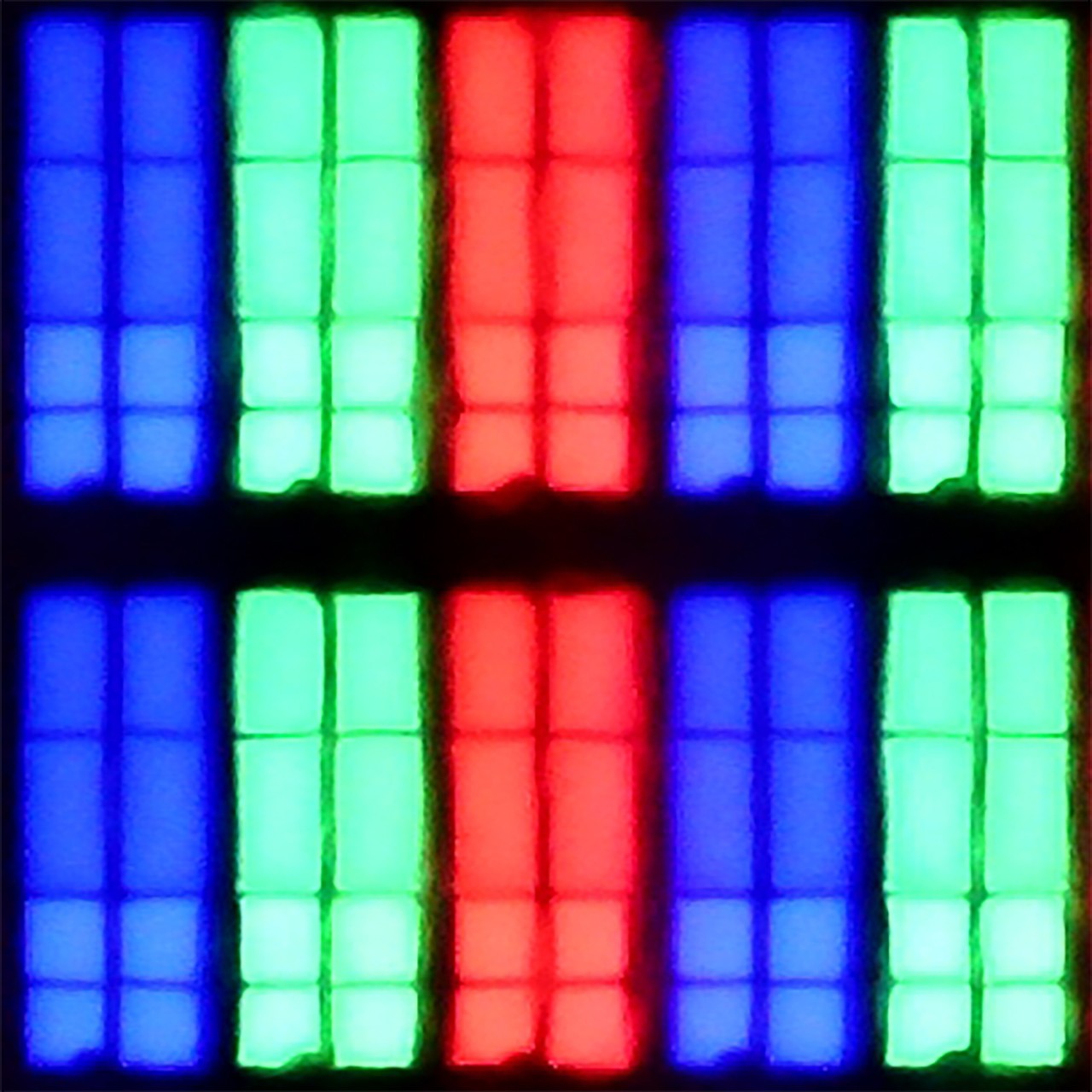
Panel uniformity and thermal imaging:

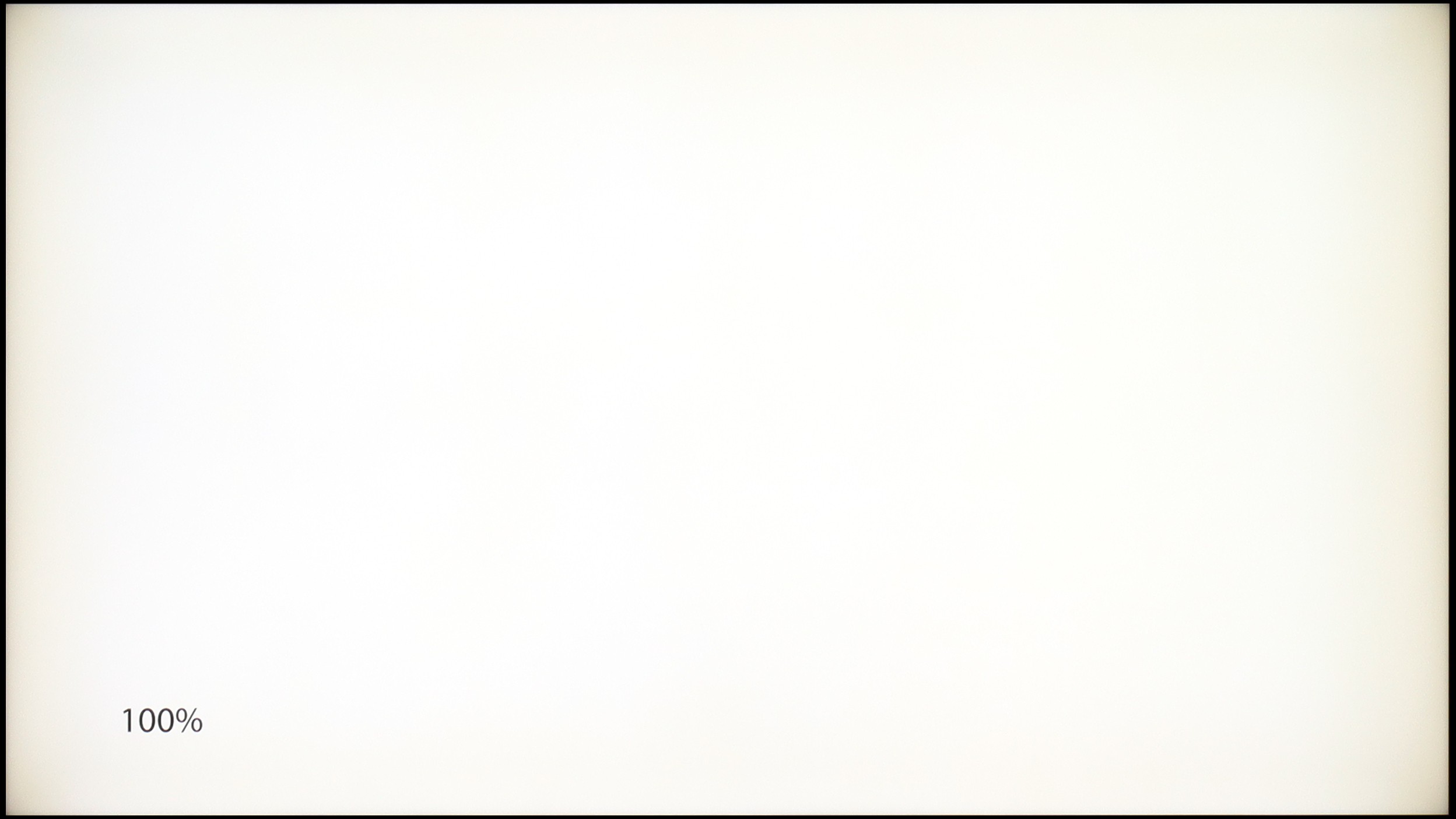
Samsung Neo QLED QN85D / QNX1D
LG QNED93A / QNED90A
TV features
7.4/10
8.2/10
- HDMI inputs0 x HDMI 2.0, 4 x HDMI 2.1 48Gbps0 x HDMI 2.0, 4 x HDMI 2.1 48Gbps
- OutputsToslink (Optical audio), eARC (HDMI), ARC (HDMI)Toslink (Optical audio), eARC (HDMI), ARC (HDMI)
- Network InterfacesWi-Fi 2.4GHz, Wi-Fi 5GHz, Ethernet (LAN) 100MbpsWi-Fi 2.4GHz, Wi-Fi 5GHz, Ethernet (LAN) 100Mbps
- TV receptionDVB-T, DVB-T2, DVB-S, DVB-S2, DVB-CDVB-T, DVB-T2, DVB-S, DVB-S2, DVB-C
Classic features:
- Recording to USB (terrestrial TV)
- Recording programming
- Picture in Picture (PiP)
- RF remote control (no need to aim at the screen)
- Backlit remote control
- Teletext
- Audio only mode
- Bluetooth headphones support
- Simultaneous Bluetooth headphones & TV audio
Smart features:
- AirPlay
- Screen mirroring (Windows Miracast)
- Voice search
- Voice search in native language
- Ability to connect a keyboard and mouse



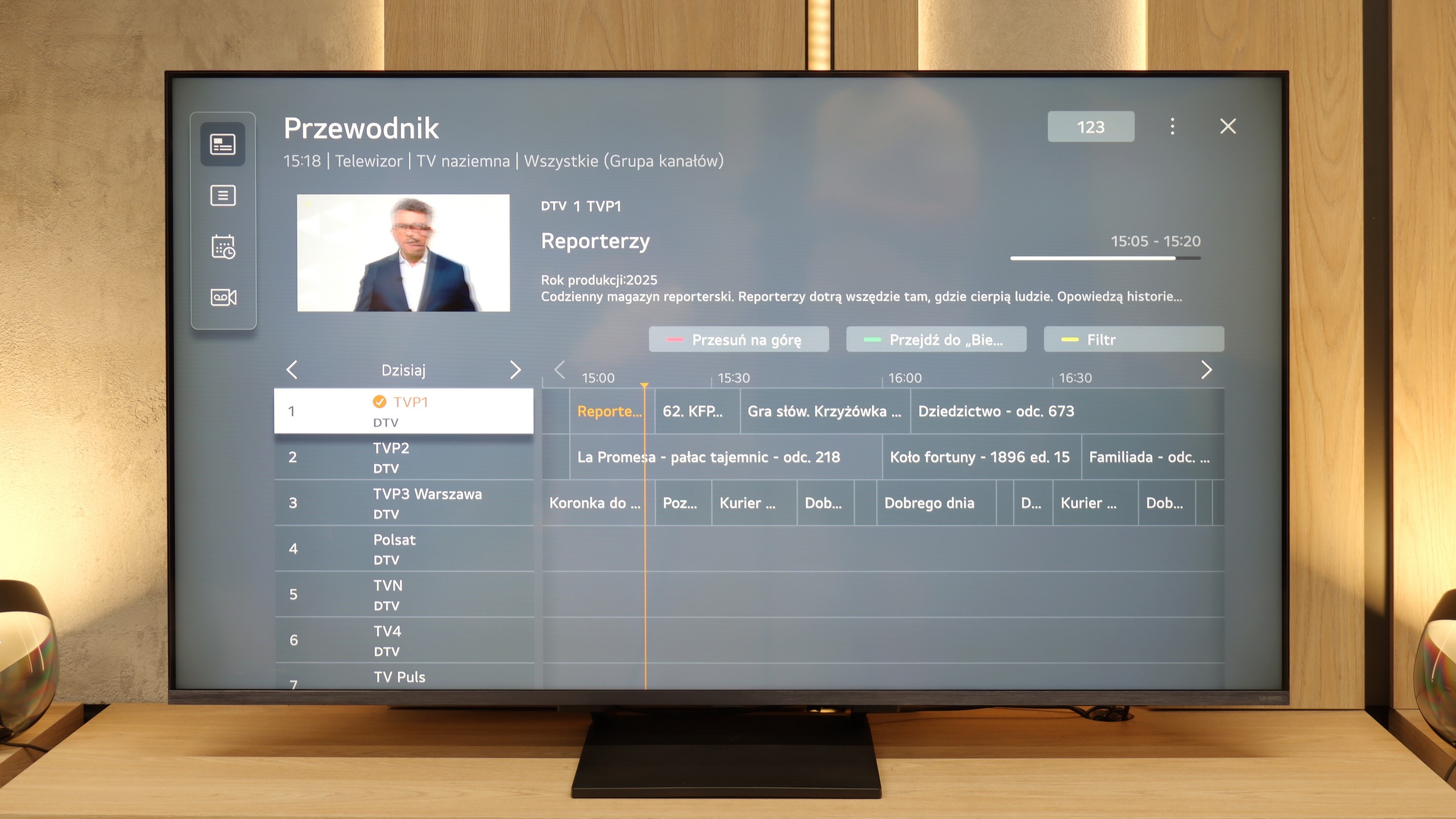
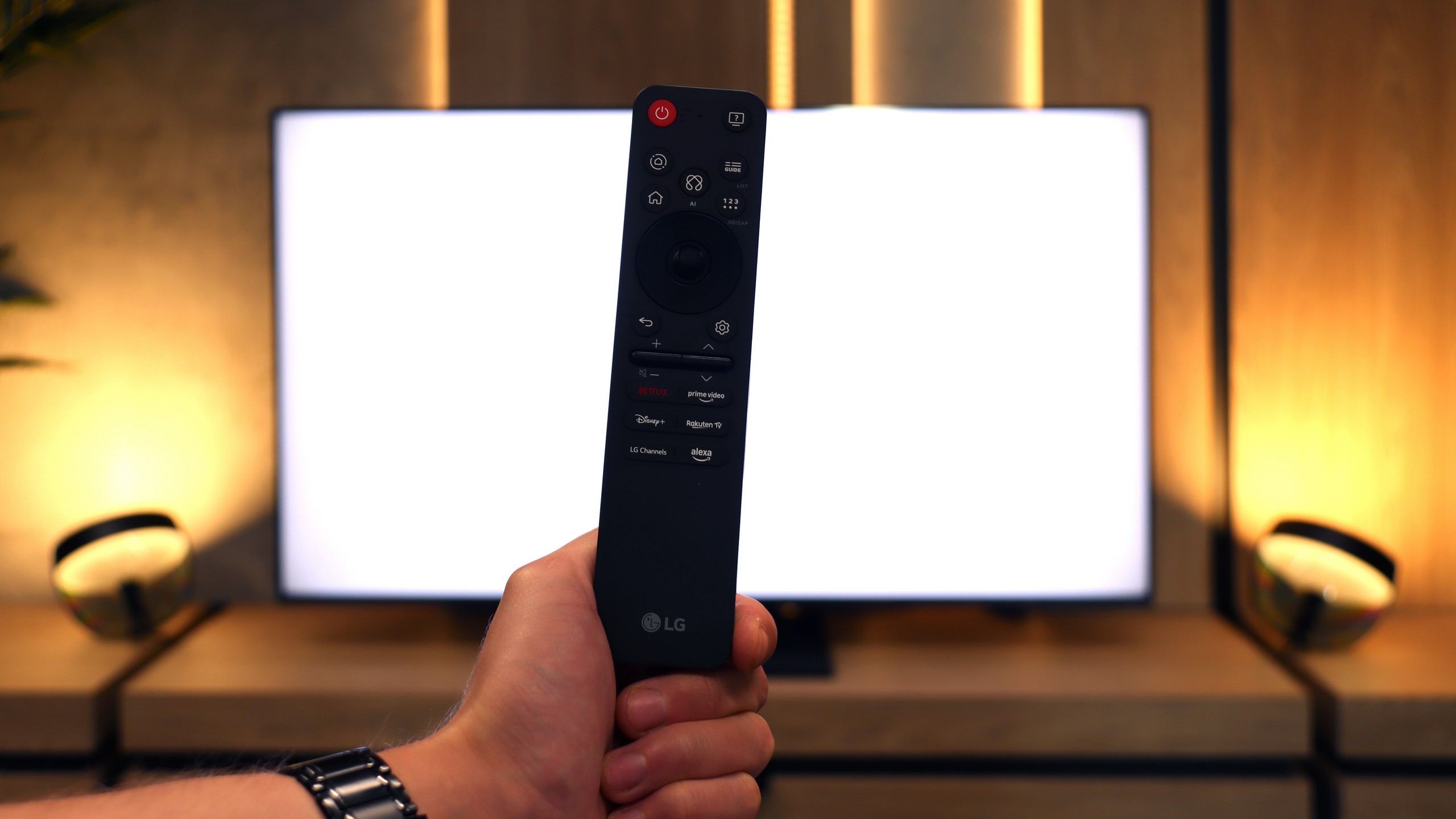
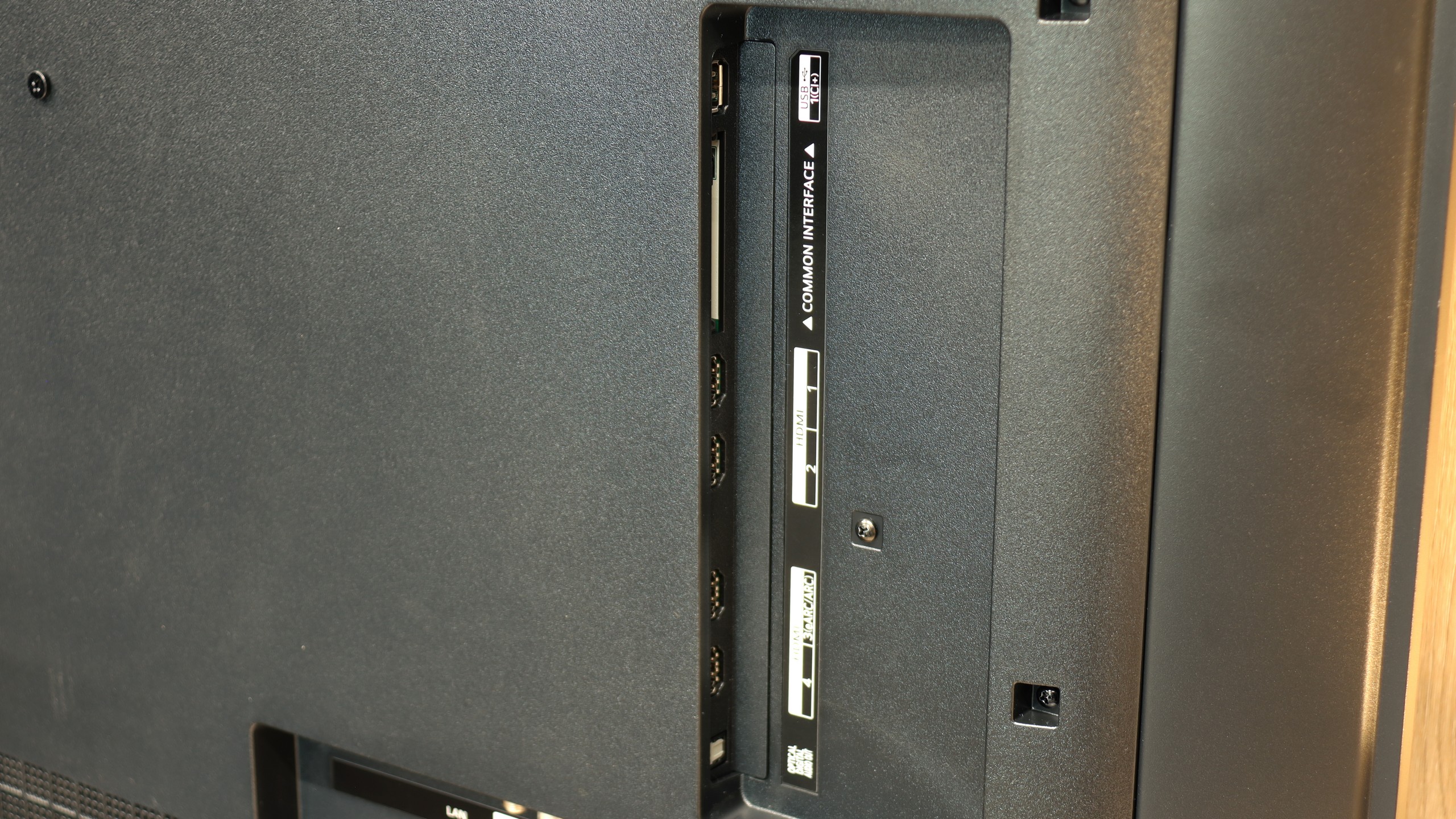
Samsung QN85D offers a wide range of smart features, thanks to the Tizen platform. Users have access to applications and features such as SmartThings, allowing management not only of Samsung devices but also equipment from other brands, creating a complete smart home ecosystem. The TV also supports AirPlay, enabling convenient content streaming from Apple devices directly to the screen, enhancing flexibility and comfort in everyday use.
Model QN85D also stands out in terms of unique features. The TV features Daily+, offering a variety of daily content such as fitness exercises or workspace. Additionally, the attractive appearance of the TV, while not as slim as last year's models, still presents well. The central stand provides solid support and adds character to the device, giving the TV a more elegant look.
In terms of user features, the TV is equipped with a remote that controls set-top boxes, such as Canal+, allowing easy control of most home equipment with a single device. The TV also has a PiP (Picture-in-Picture) function, enabling simultaneous viewing of two image sources. Unfortunately, one of the drawbacks that can be noticed is the lack of a recording function, which may be a significant downside for some users.
Smart Features
QNED93A runs on webOS, one of the most enjoyable Smart TV systems. It comes equipped with AirPlay, Screen Mirroring, Chromecast, and convenient voice control. The platform is fairly intuitive and generally quick, though in the tested unit, there were moments when the response to the remote's touch required a moment of "thought". However, it’s hard to classify this as a serious issue – webOS remains a refined system and will likely receive further updates that will enhance it.
Classic Features
In this model, LG didn't include the old Magic remote with a numeric keypad, but the TV performs excellently as a screen for daily viewing of antenna channels. The EPG interface is clear, the TV offers a TV guide, and we have the option to record programs from the built-in tuners directly to a USB drive. Everything works correctly and intuitively. We just missed the PiP functionality, which is offered by only two manufacturers in 2025.
Magic Remote
The Magic Remote is still the biggest difference compared to the competition. In 2025, it underwent a slight redesign – it has fewer buttons and resembles some of the minimalist remotes from Samsung. However, the cursor remains key, functioning like a magic wand. Just move your hand, and the pointer on the screen follows your movement. It’s incredibly simple yet very convenient. Navigation in the menu or entering passwords is significantly quicker, and it’s hard to switch back to traditional buttons afterwards.
Playing files from USB
9.1/10
8.8/10
Supported photo formats:
Maximum photo resolution:

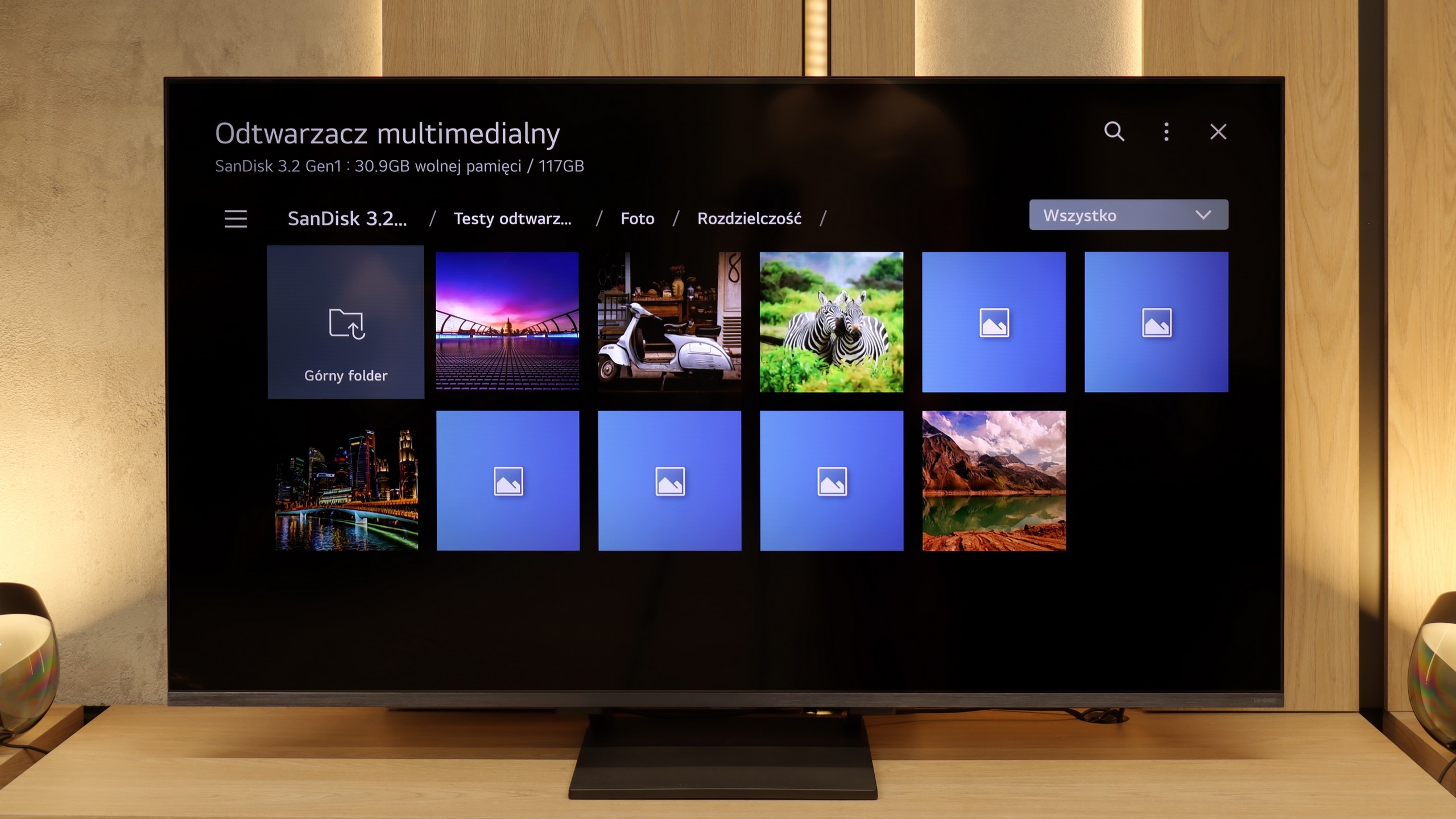
The built-in player in the Samsung QN85D should satisfy most users. It handles popular video and audio formats without much trouble, offering solid support for the most commonly used codecs. However, more demanding users may notice some shortcomings – it is not possible to play photos in the HEIC format, popular in Apple devices, as well as a few other, less common photo formats.
The built-in media player in the LG QNED93A handles most popular video and audio formats with ease, so it’s more than sufficient for basic use. However, during testing, we noticed two minor hiccups. The first is the lack of support for HEIC files, which are Apple’s photo format. The manufacturer claims that the TV should open them, but we couldn't confirm this in practice. The second issue concerned text files with subtitles in TXT format. Fortunately, other more common subtitle formats worked without any problems, so it’s hard to consider this a significant limitation in everyday use.
Apps
8.7/10
9.1/10














































Sound
7/10
6.9/10
- Maximum volume-81dB
- Dolby Digital Plus 7.1
- Dolby True HD 7.1
- Dolby Atmos in Dolby Digital Plus (JOC)
- Dolby Atmos in Dolby True HD
- DTS:X in DTS-HD MA
- DTS-HD Master Audio
The sound on the Samsung QN85D television is pleasant, with a subtle sense of bass and clarity across the entire volume range. This is thanks to the built-in 2.2 40W speakers. Unfortunately, the lack of support for the DTS audio format may be problematic for users wanting to enjoy a full sound experience. In such cases, it will be necessary to use an external player to get support for this format.
LG QNED93A sounds quite pleasant for built-in speakers in a television. The sound is fairly clear, and at moderate volume levels, vocals and dialogue come through distinctly. The bass, as is often the case in relatively slim designs, isn't the strongest, but its presence is noticeable and is more than sufficient for daily TV show watching. The maximum volume reaches around 81 dB and doesn't lead to significant distortions, although during more demanding cinematic scenes, it's evident that the system has its limitations. Overall, the sound can be described as adequate and not off-putting. It definitely won't compete with a soundbar, but it won't ruin your movie experience either.
Acoustic Measurements
No acoustic data
81dBC (Max)
75dBC


